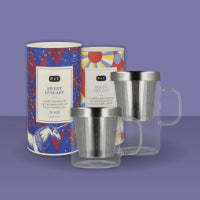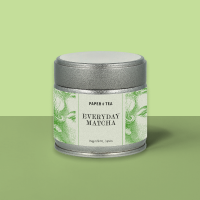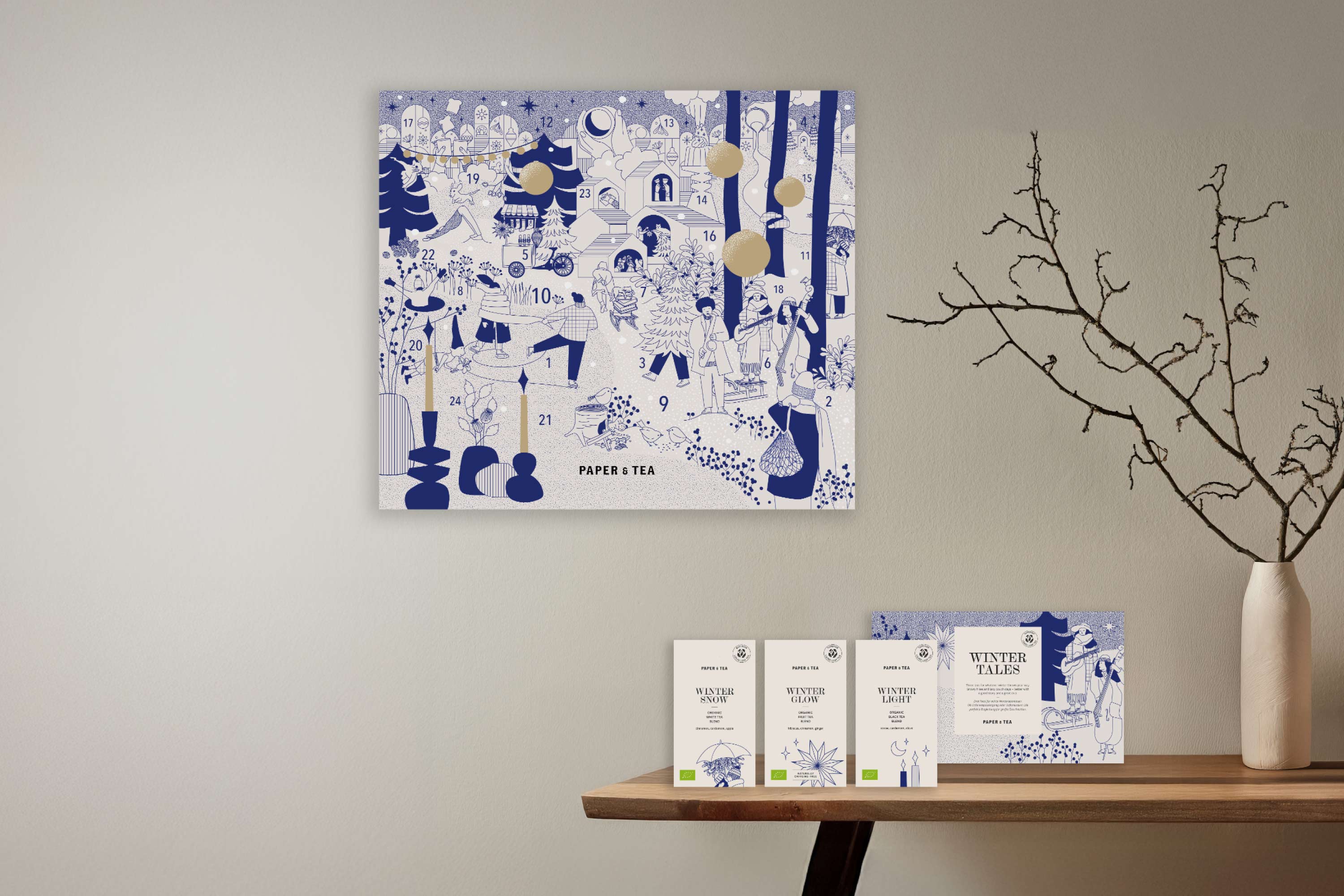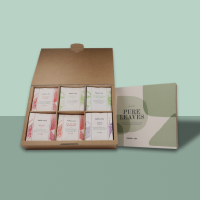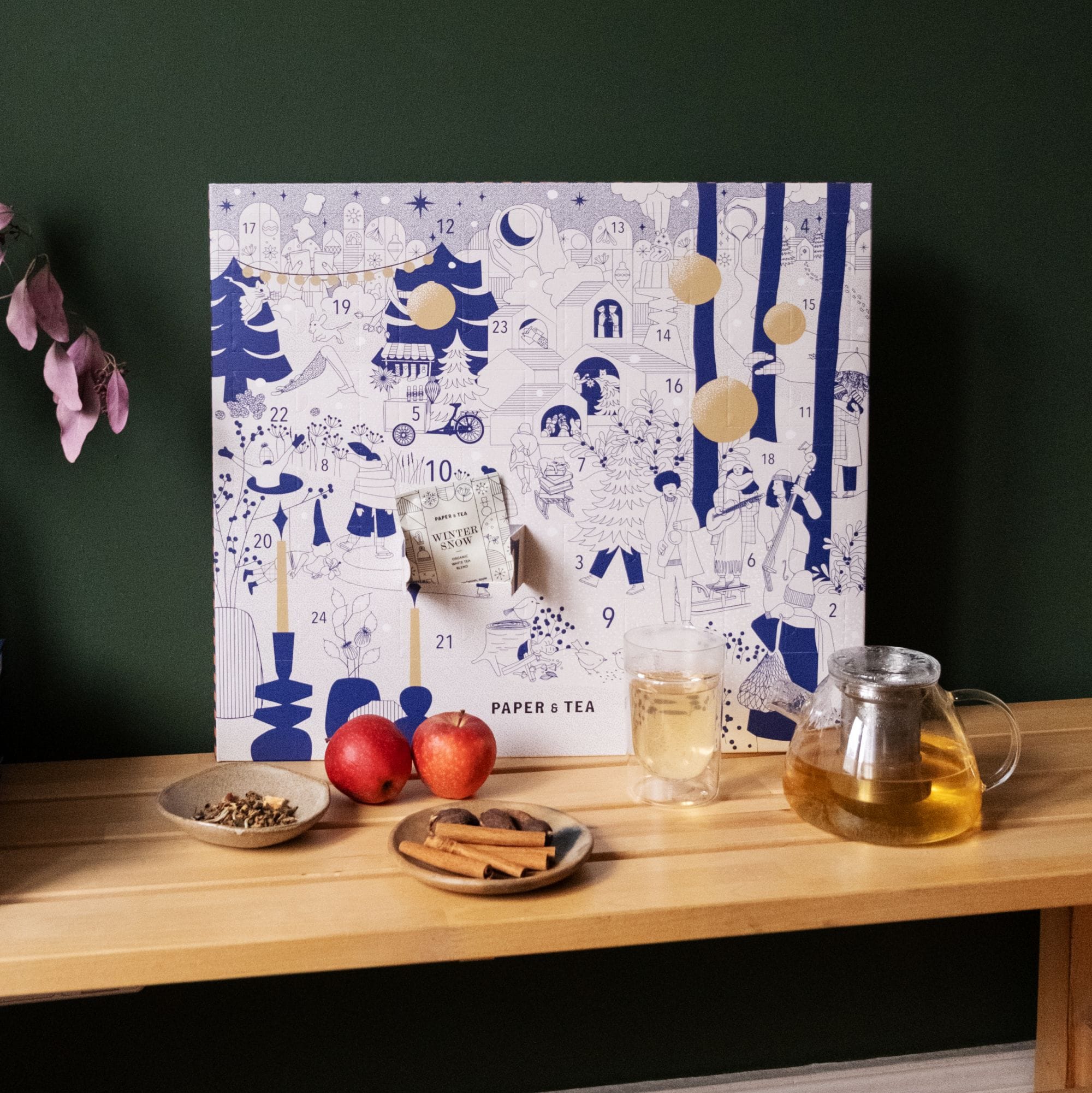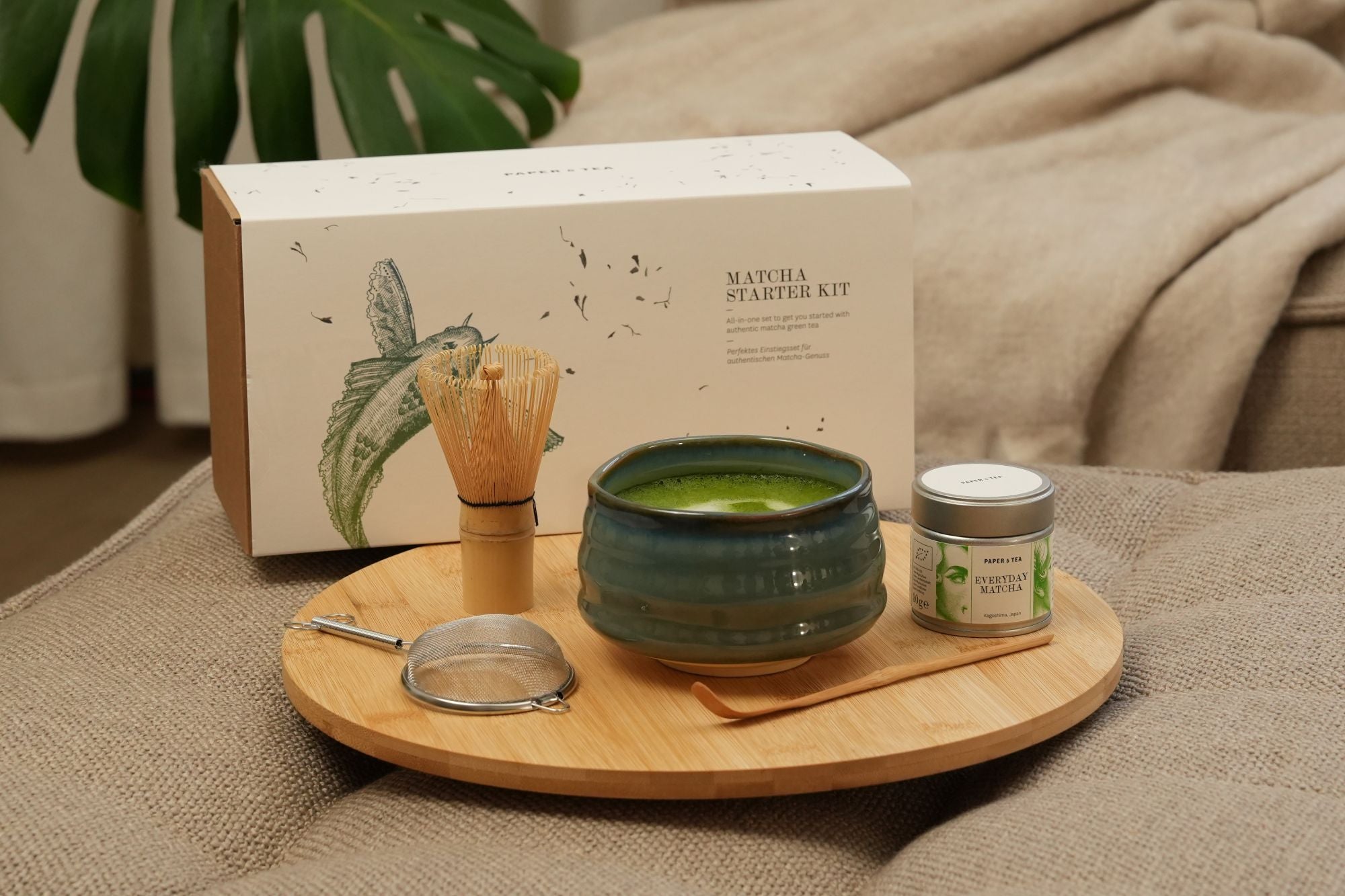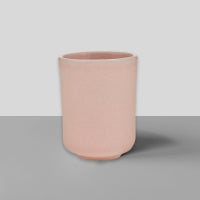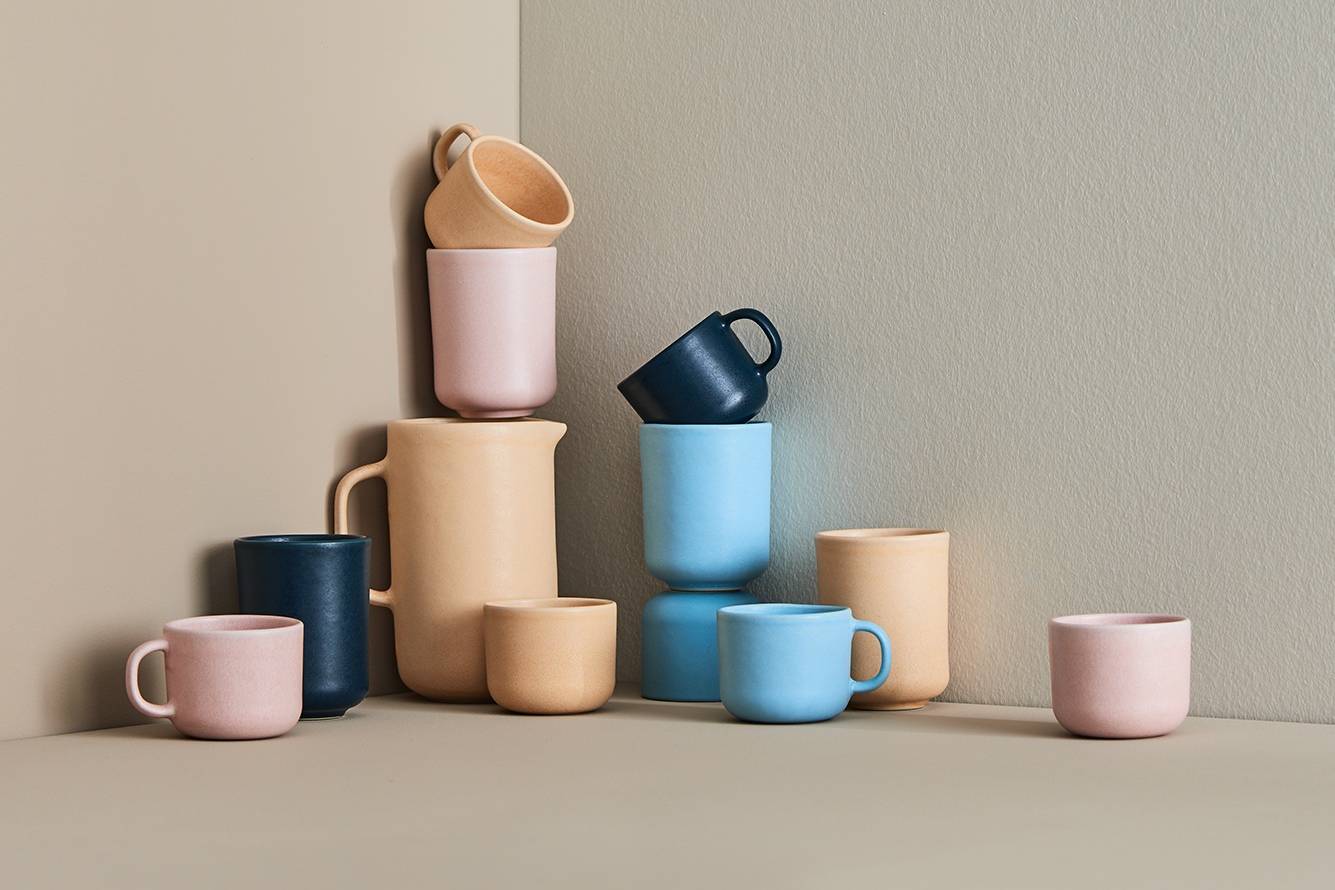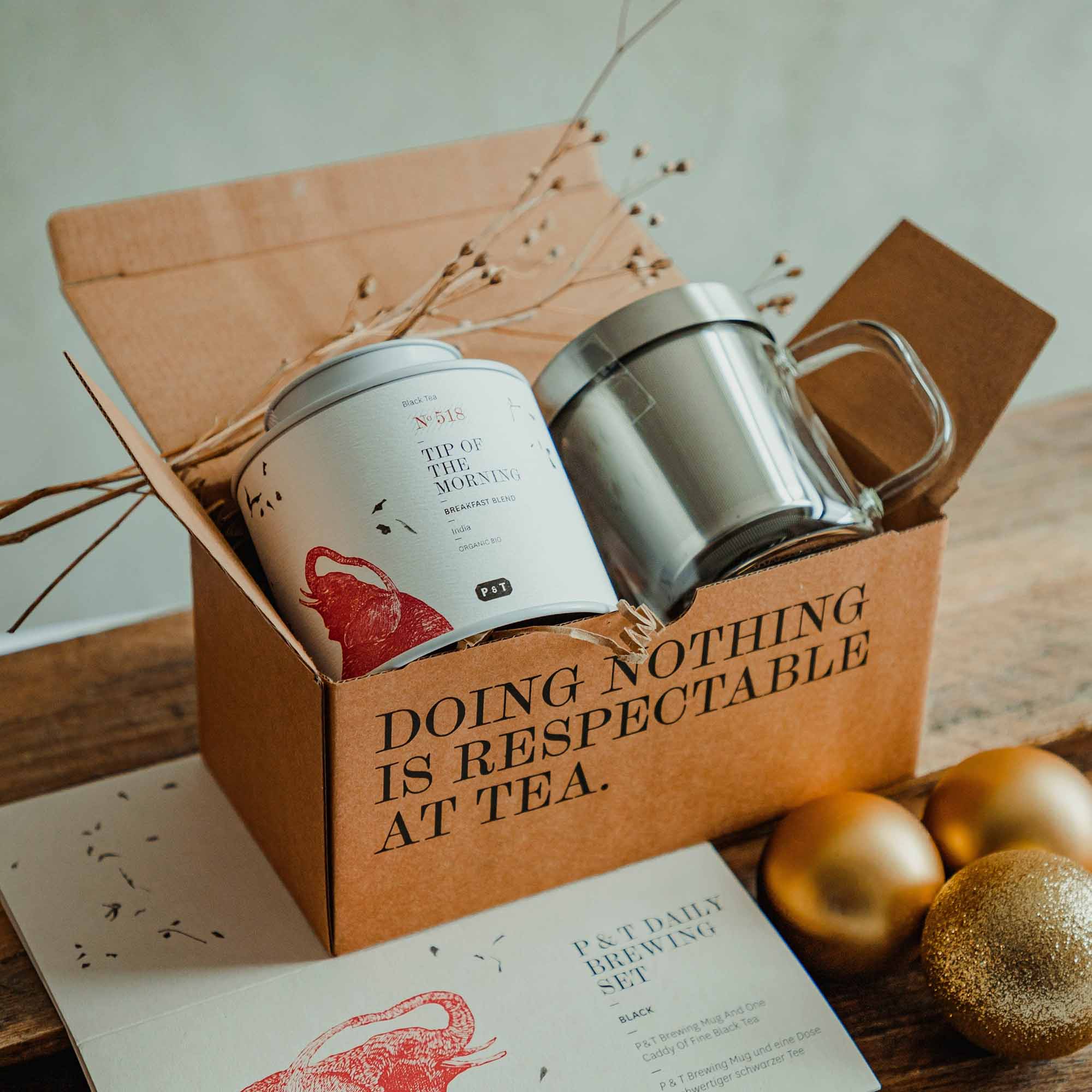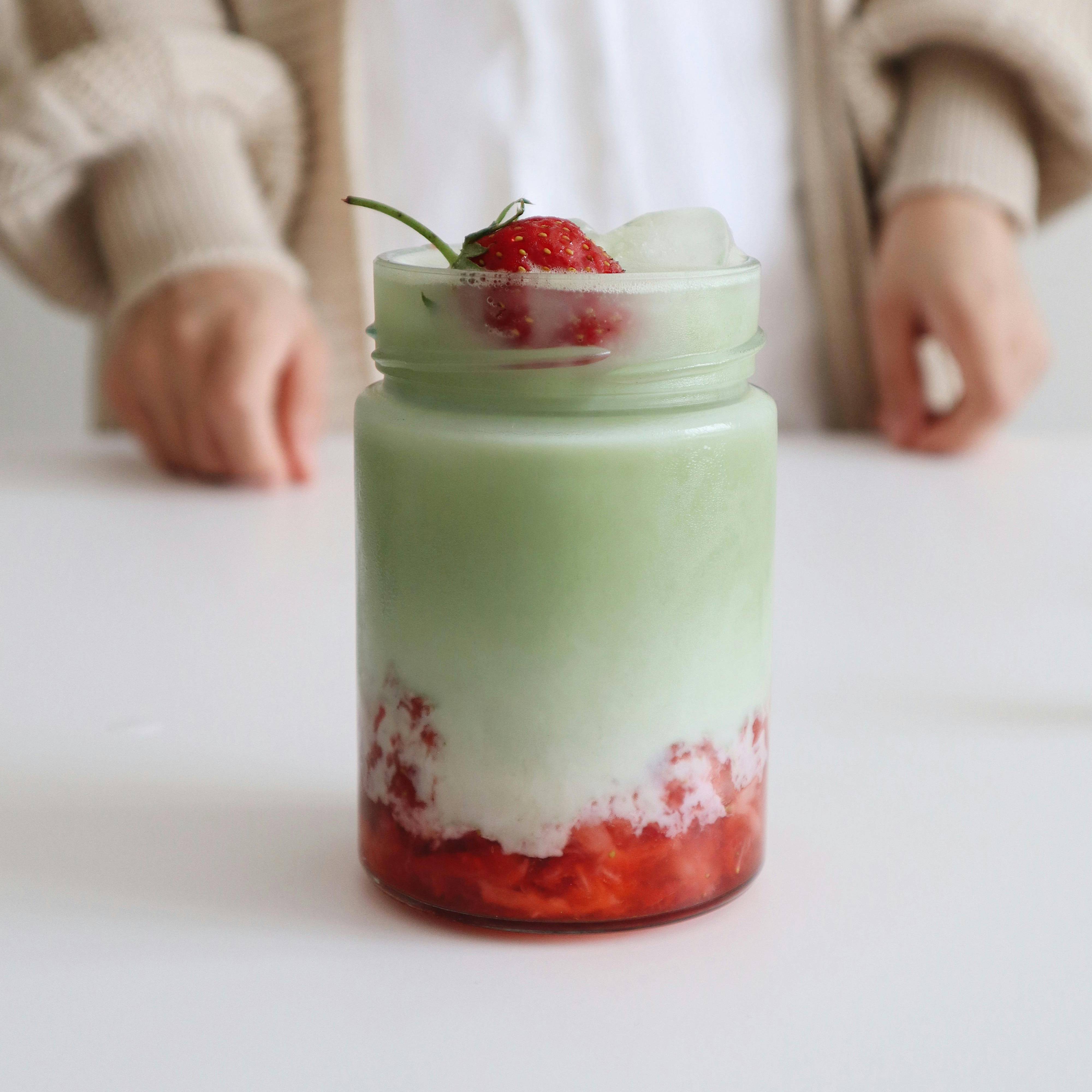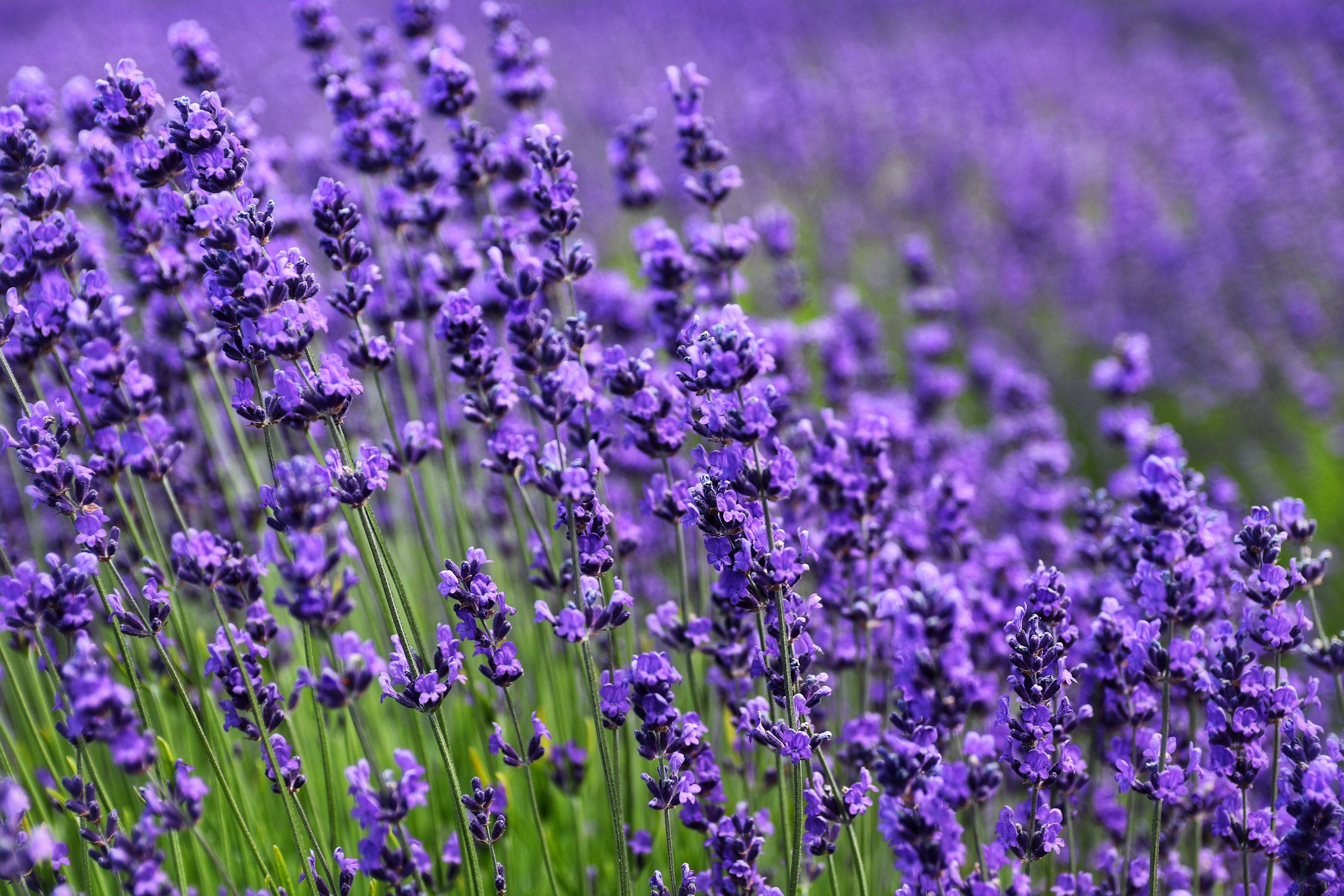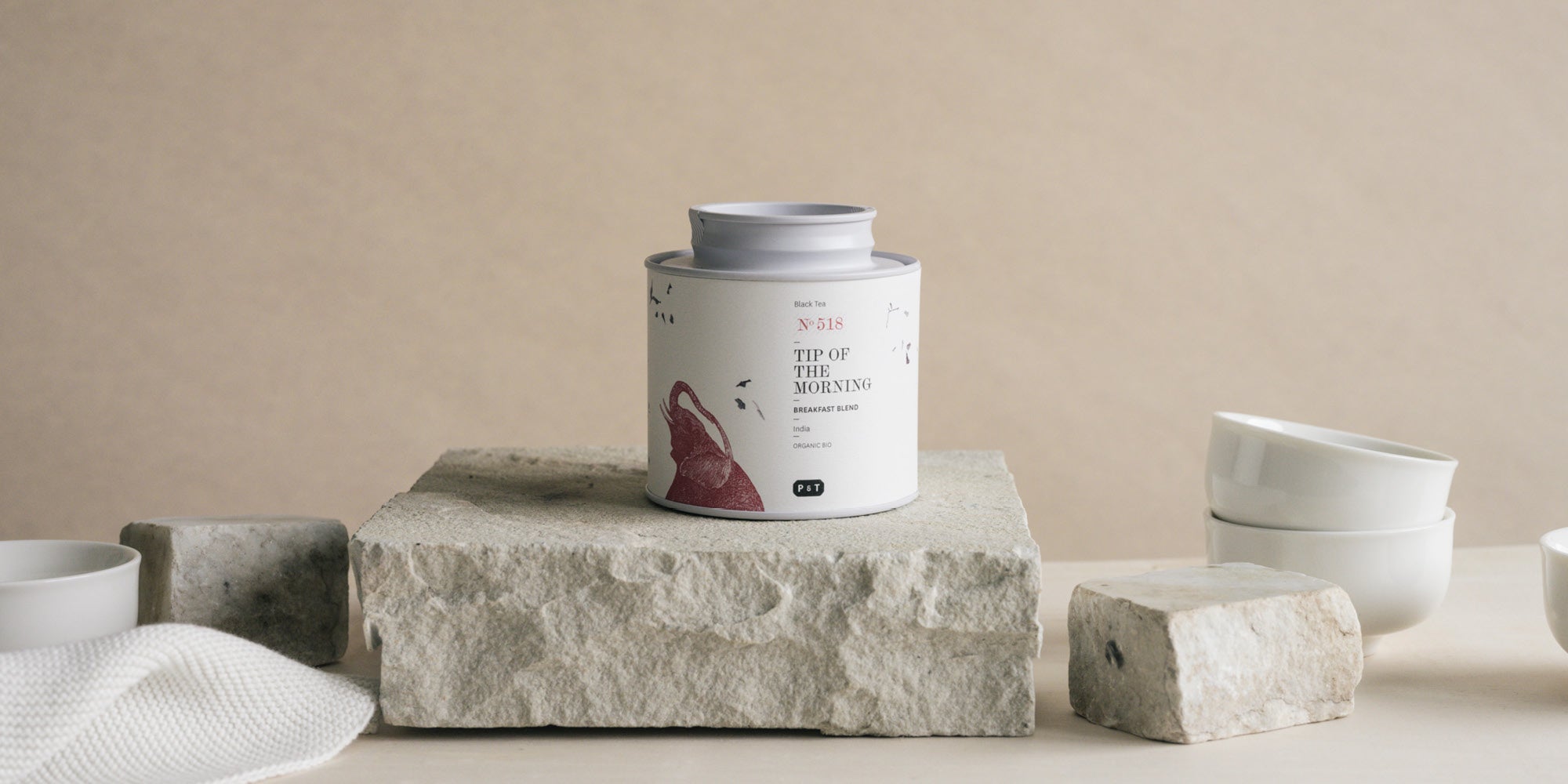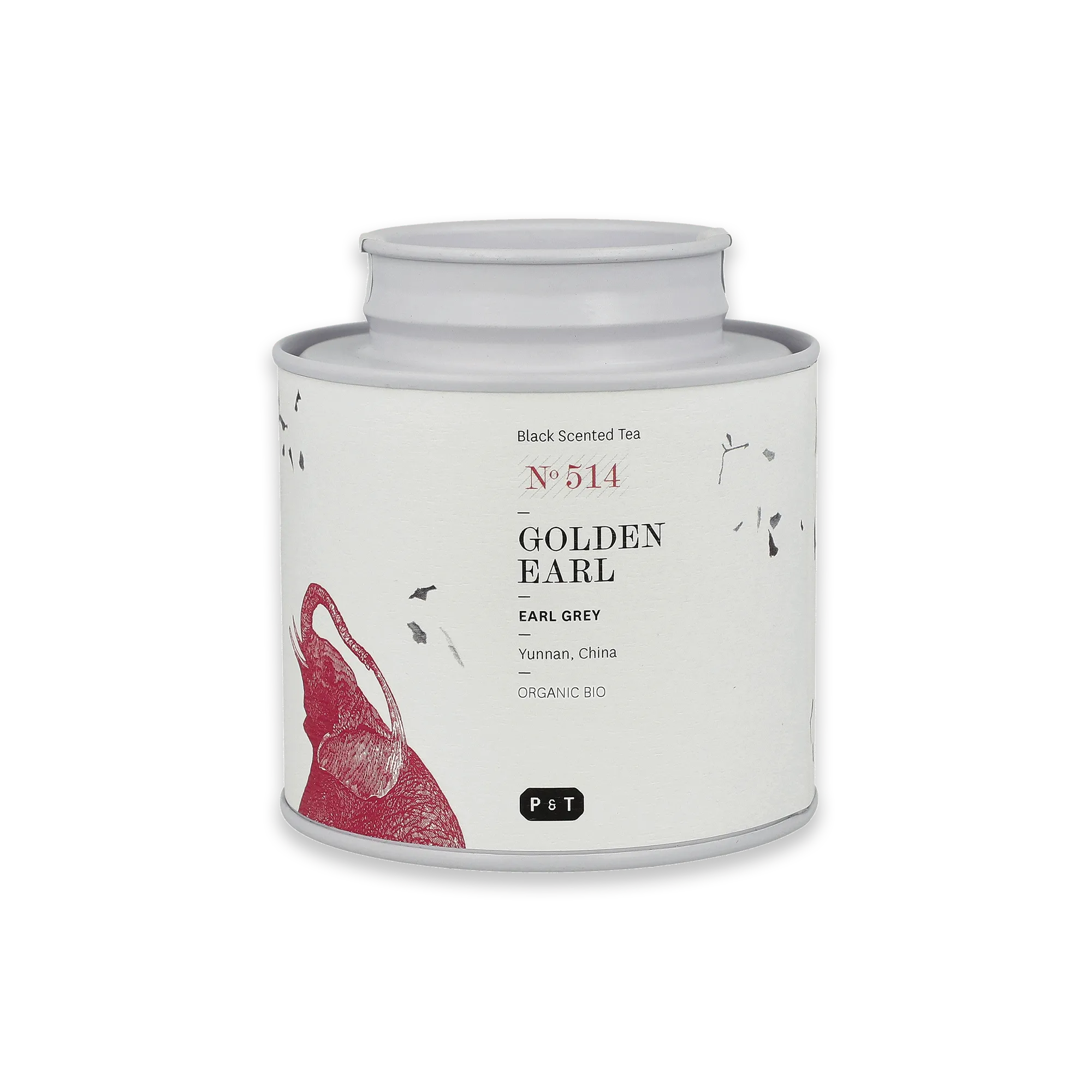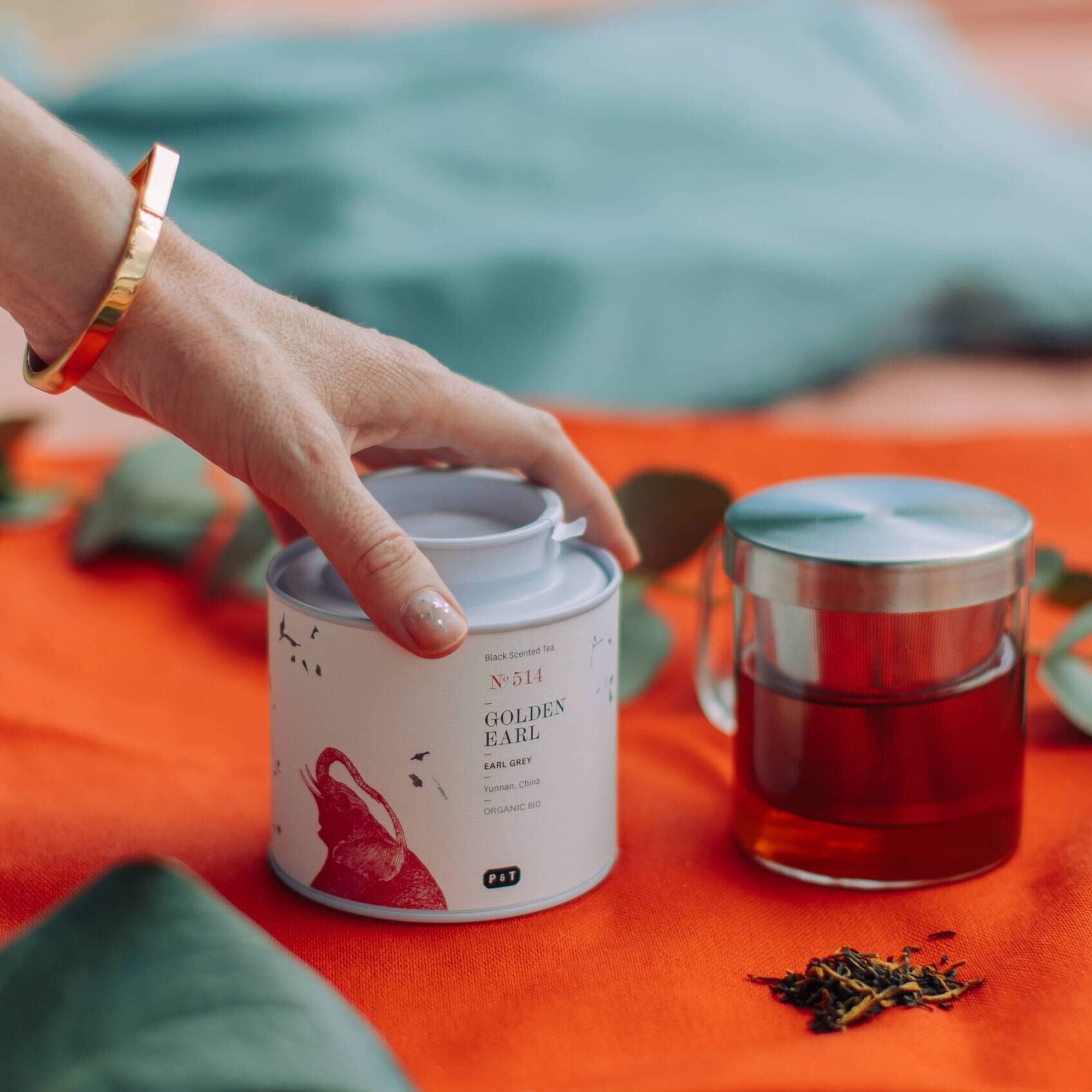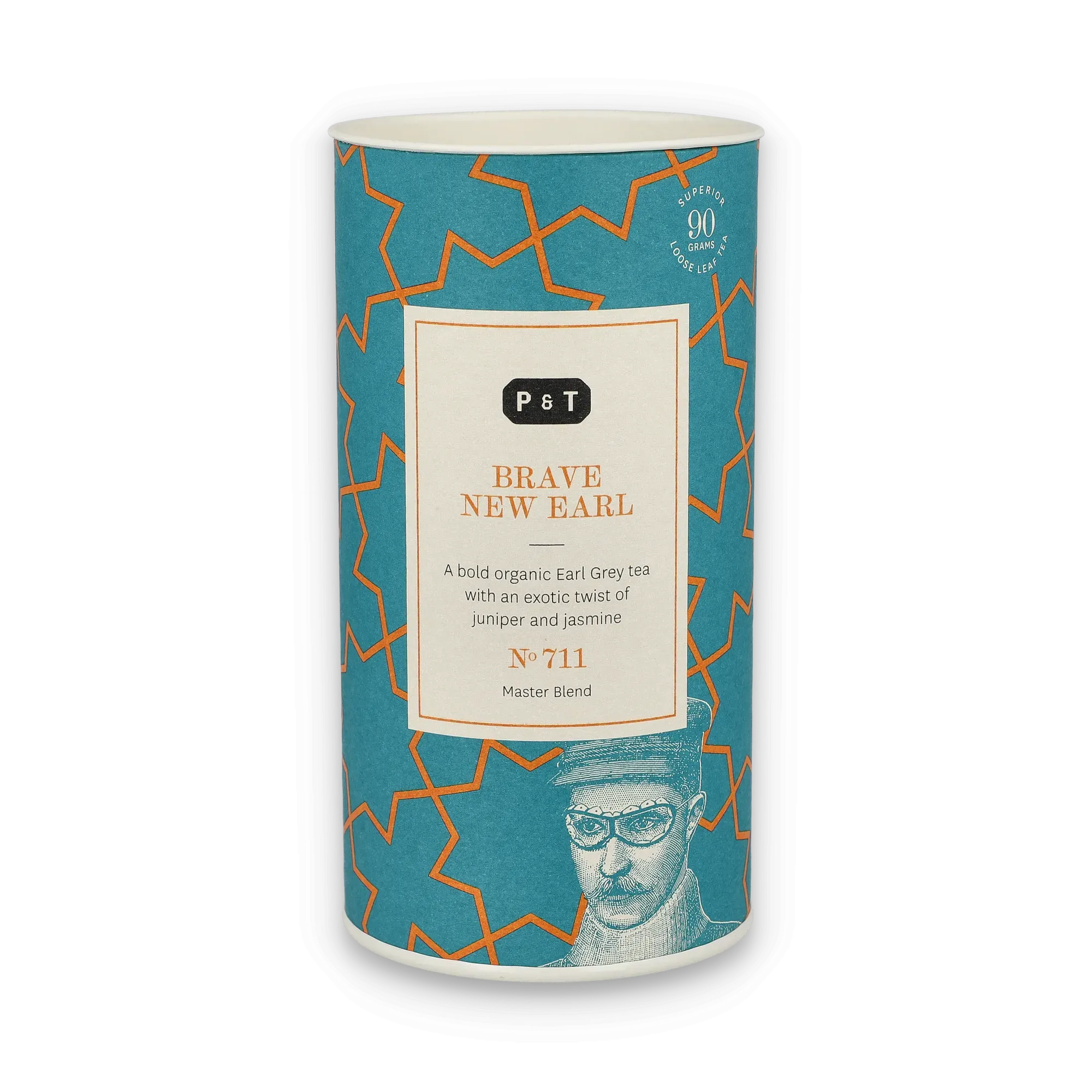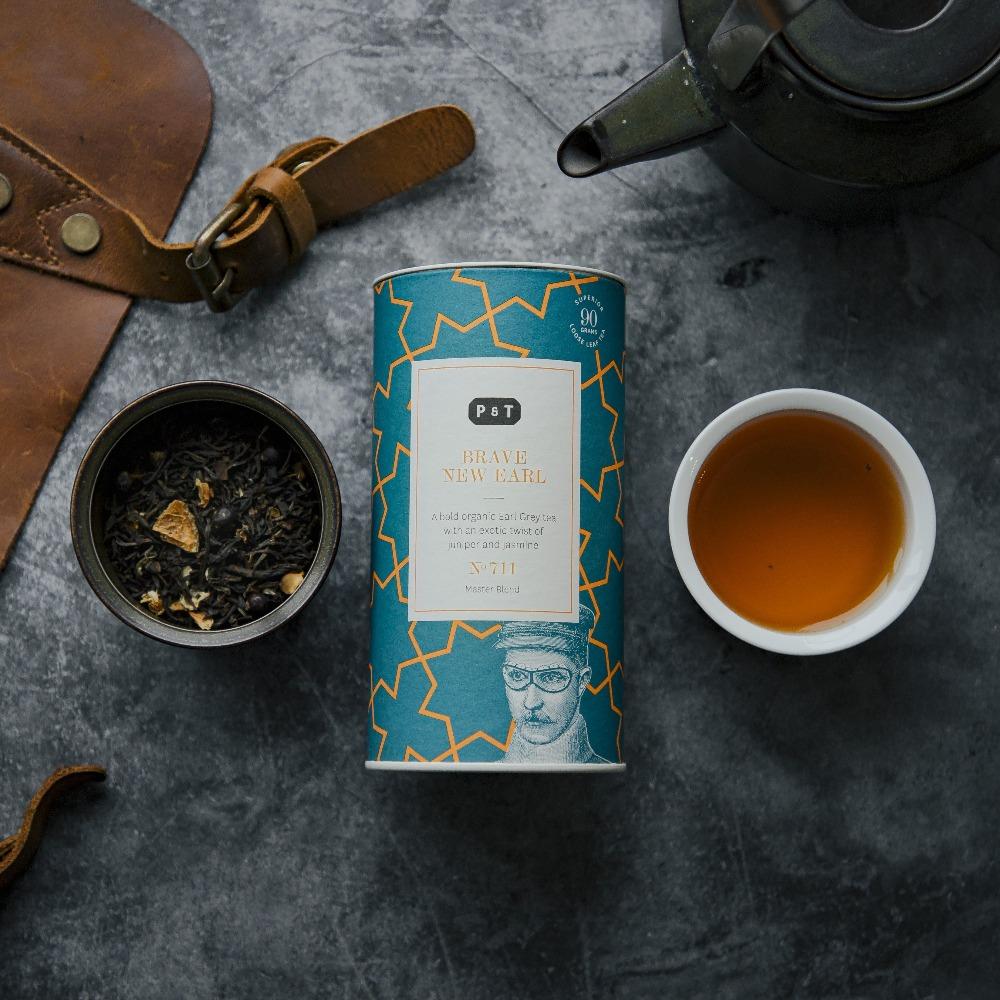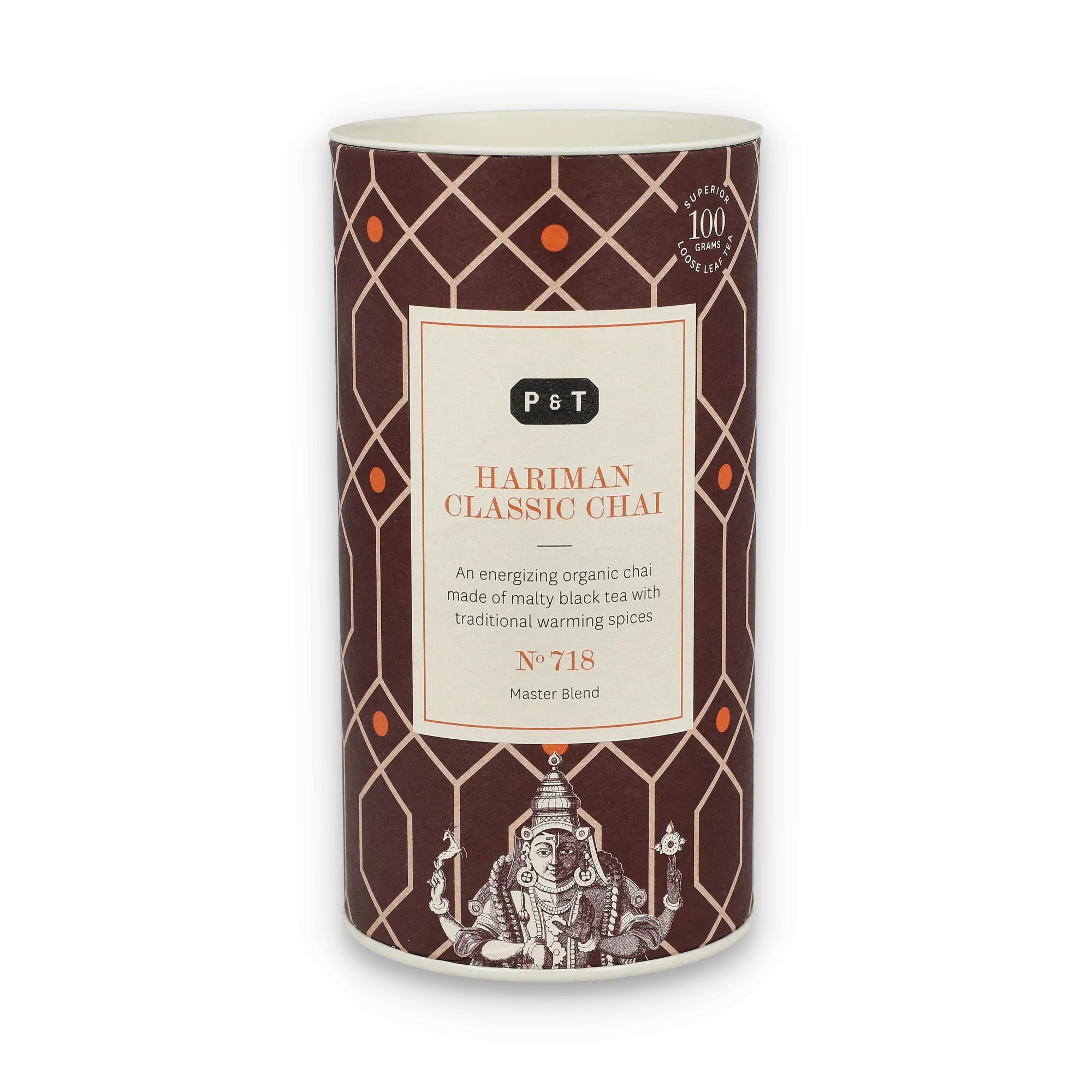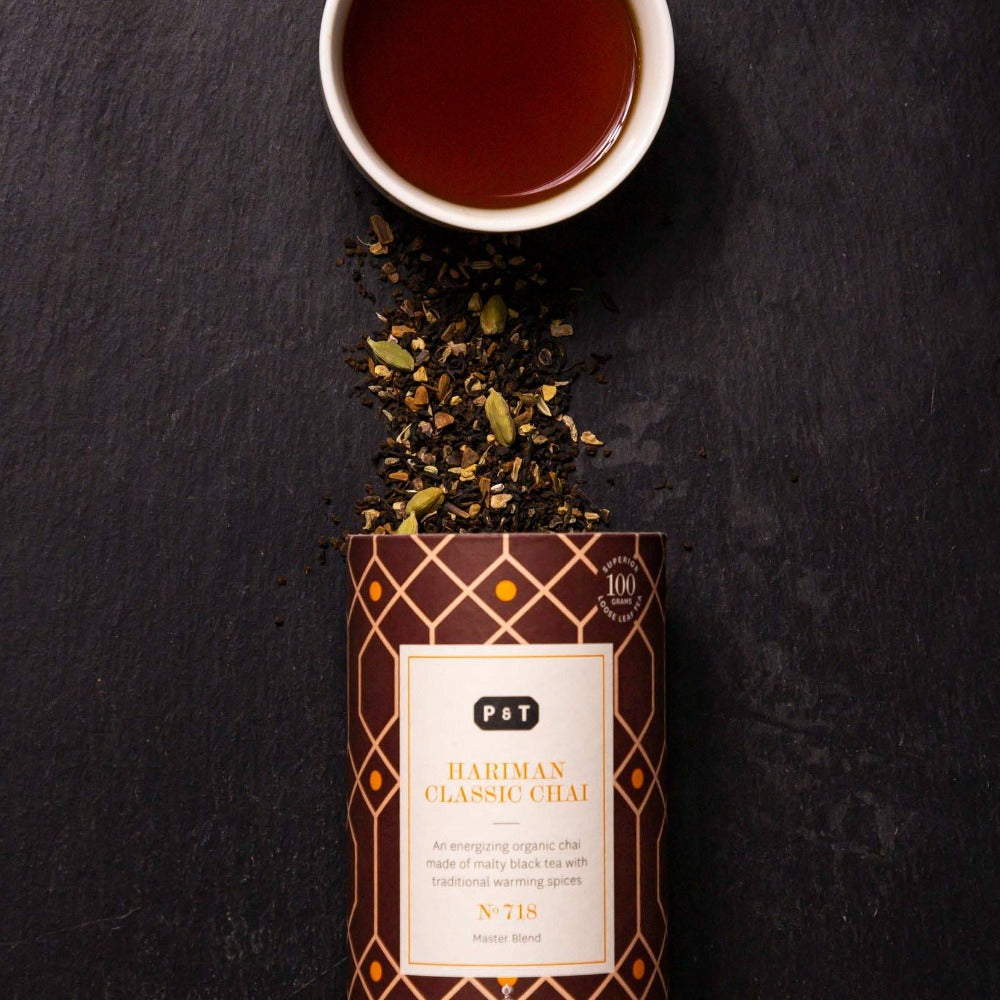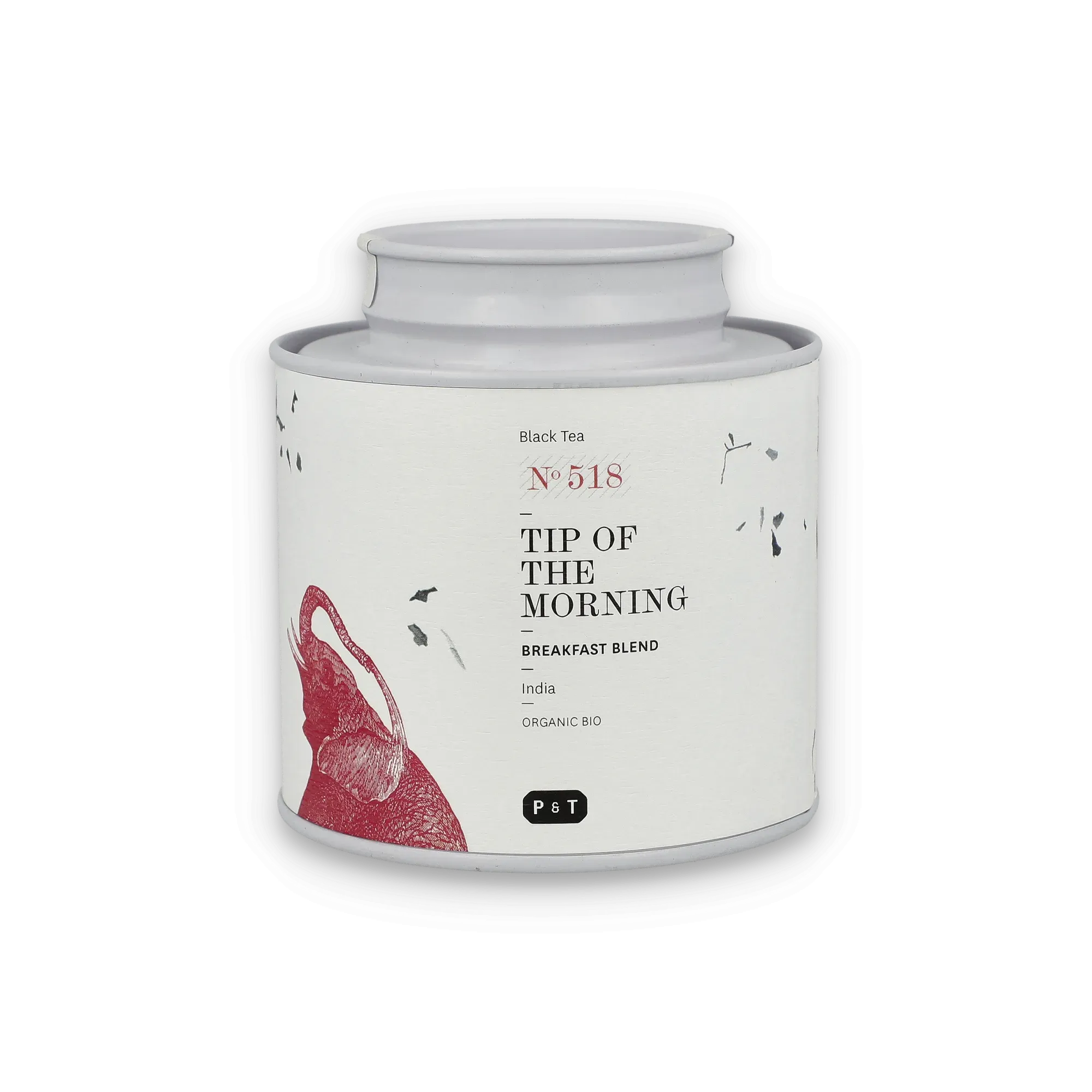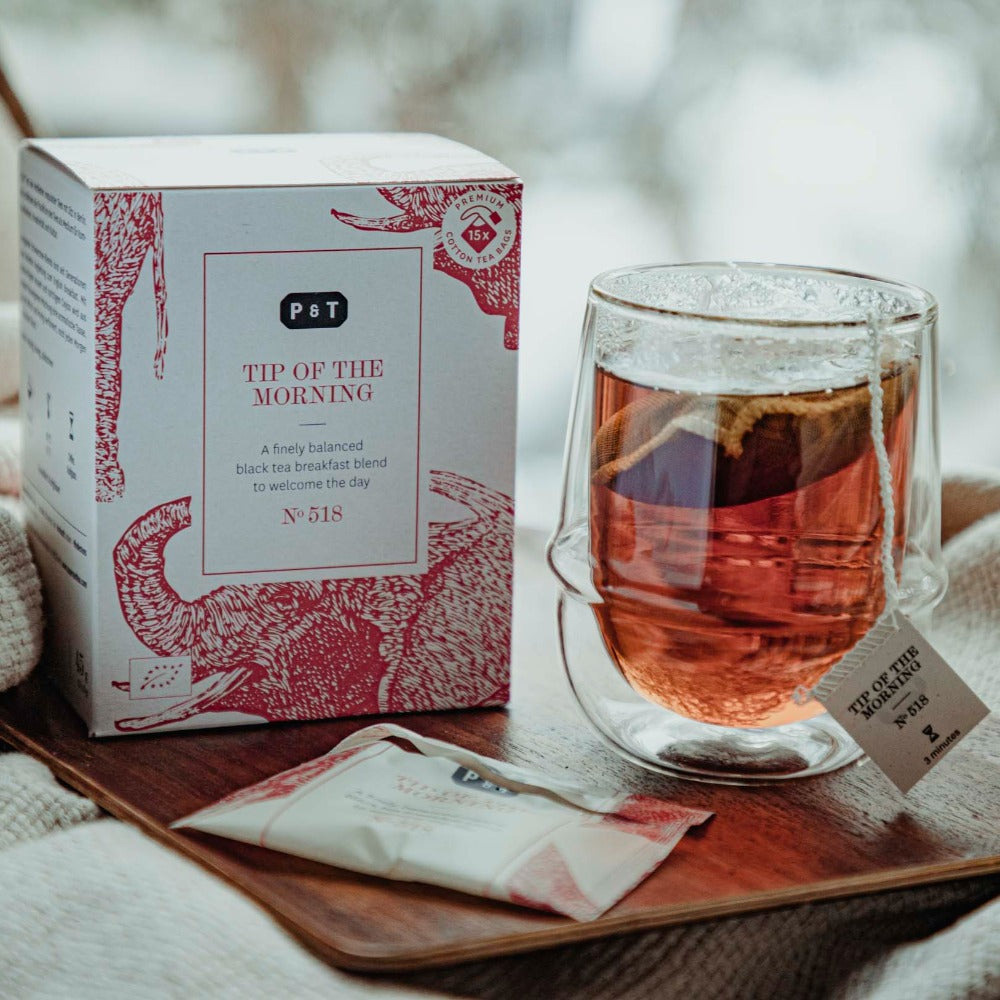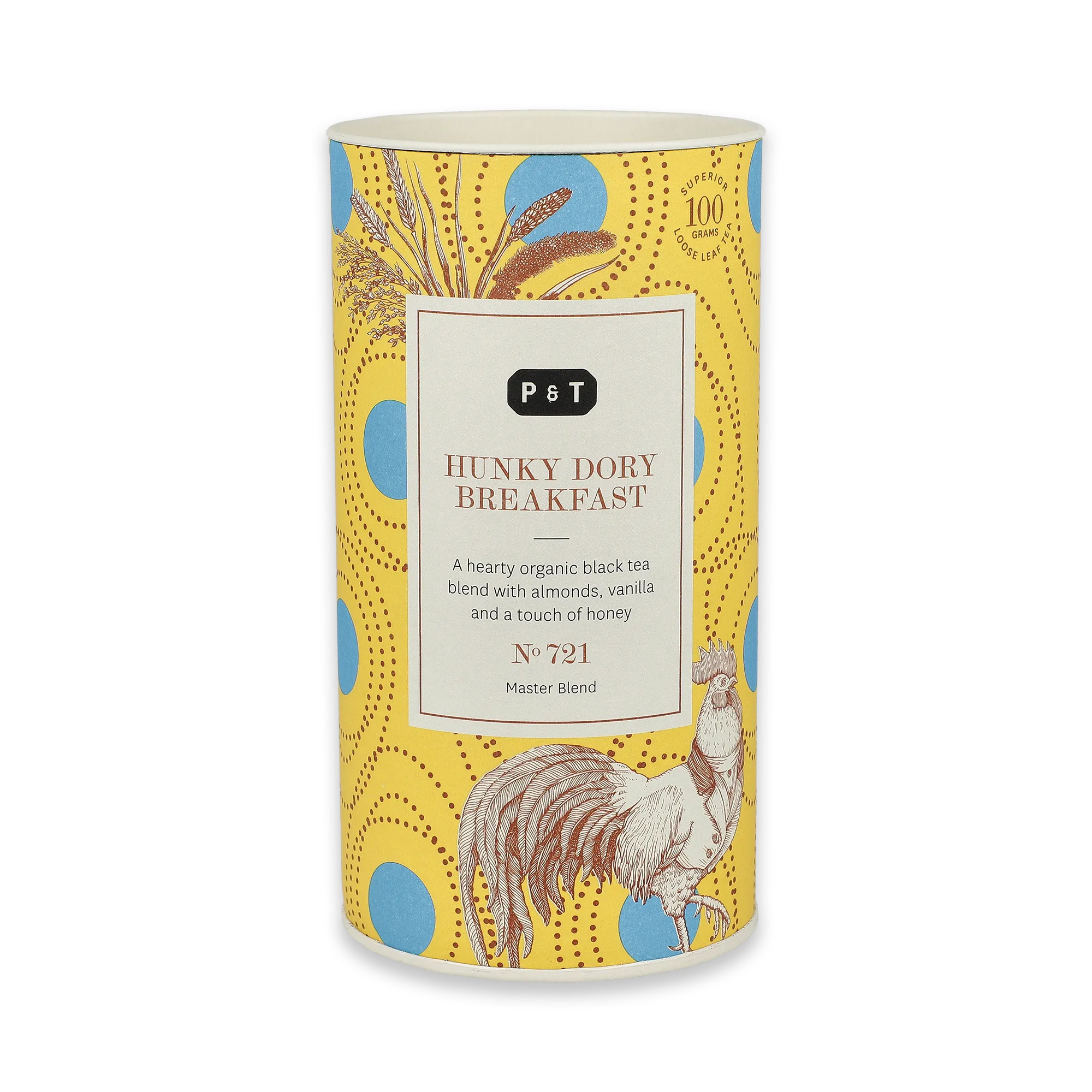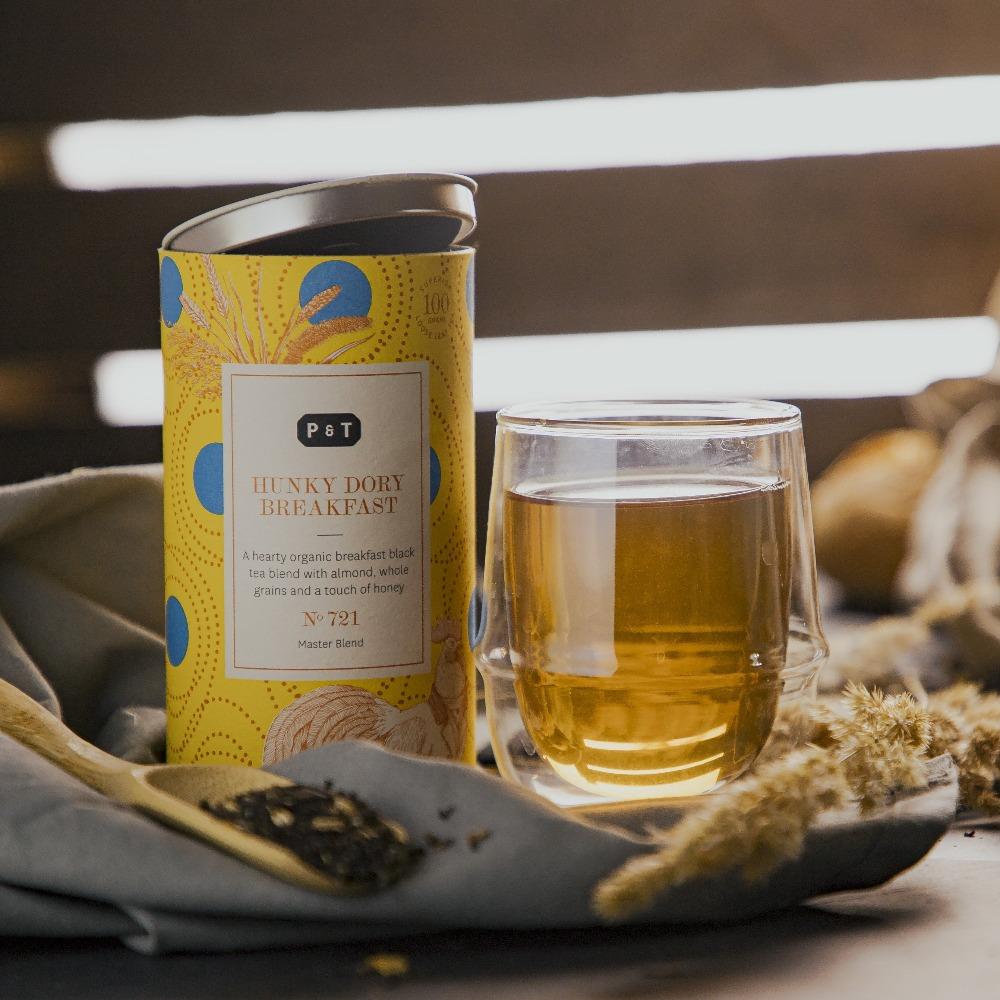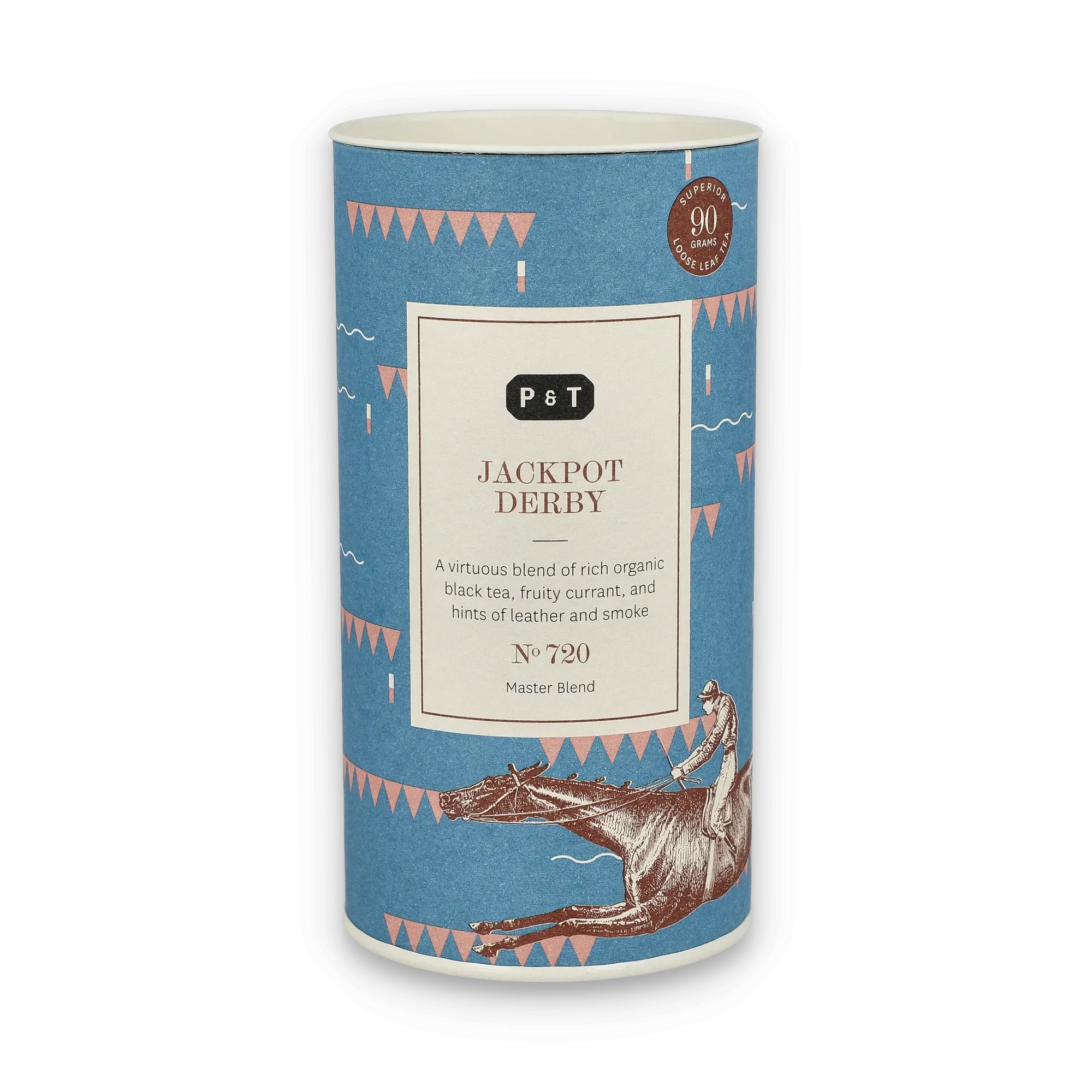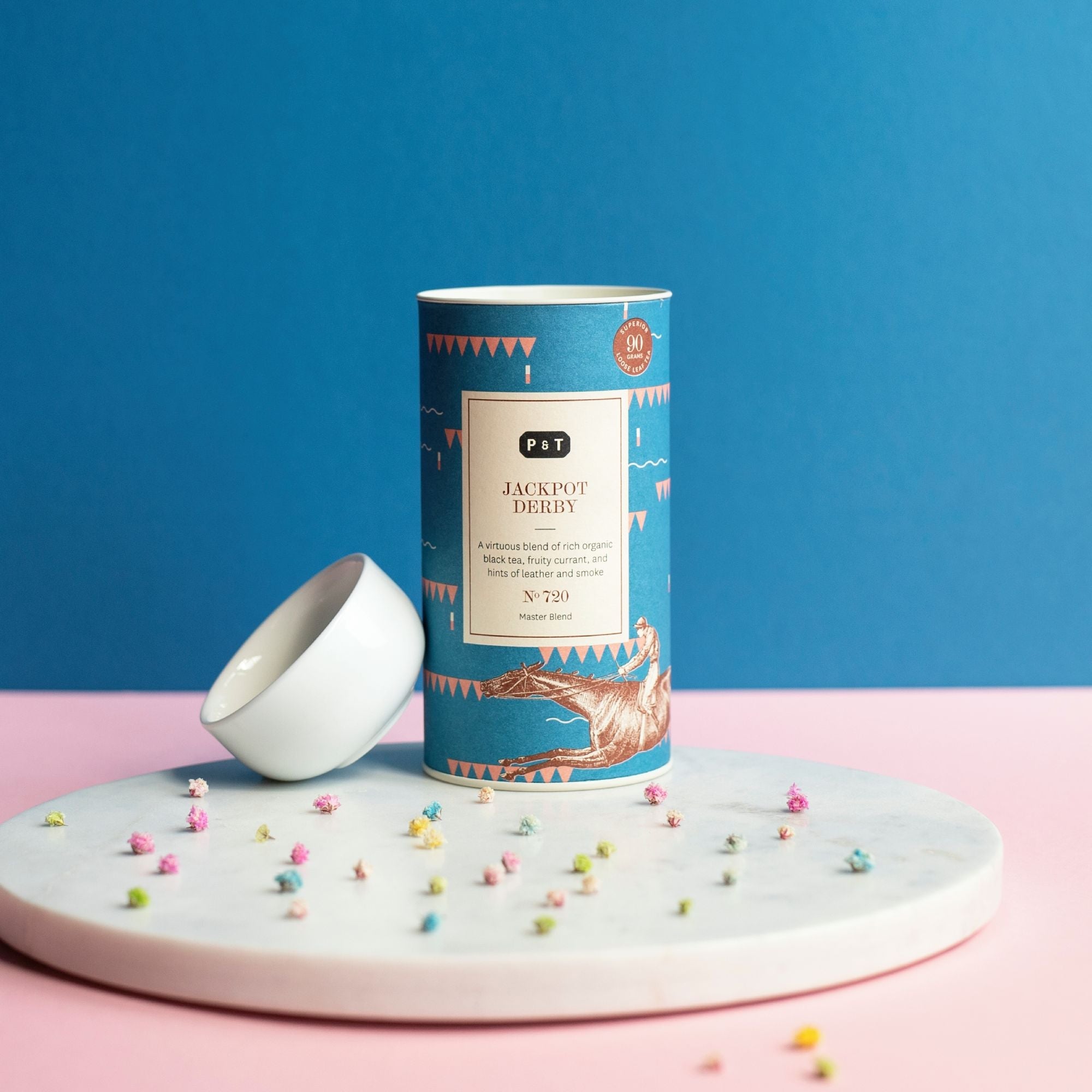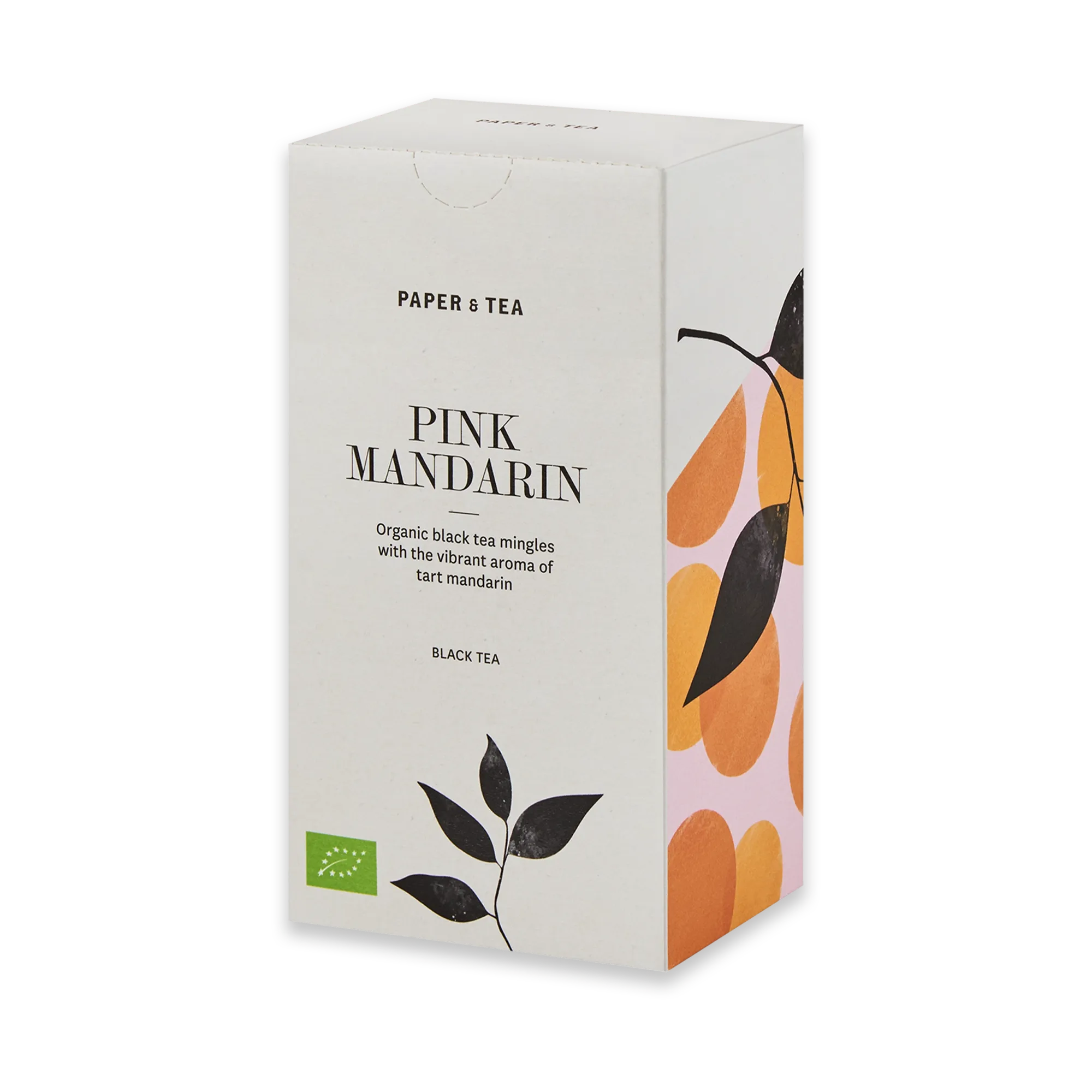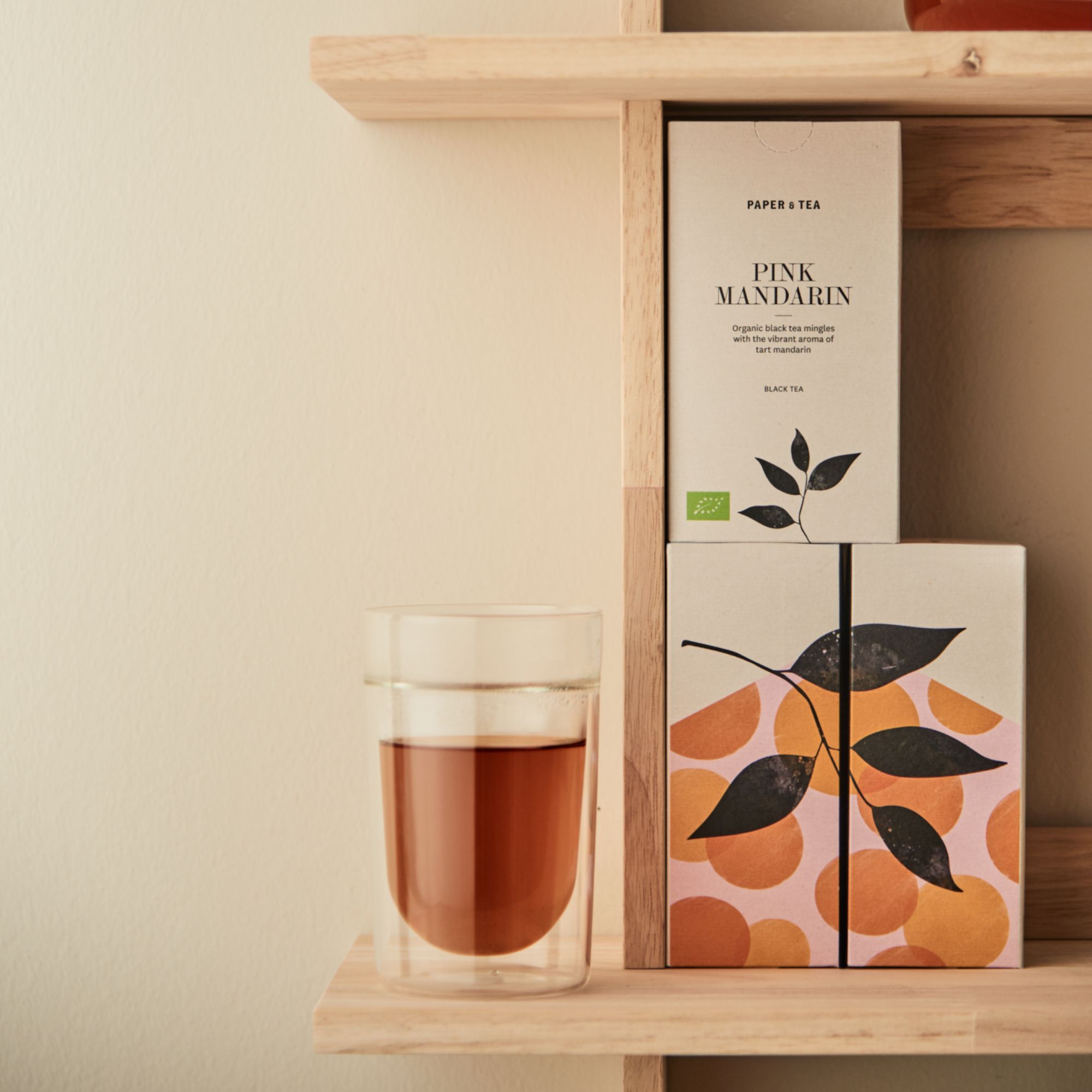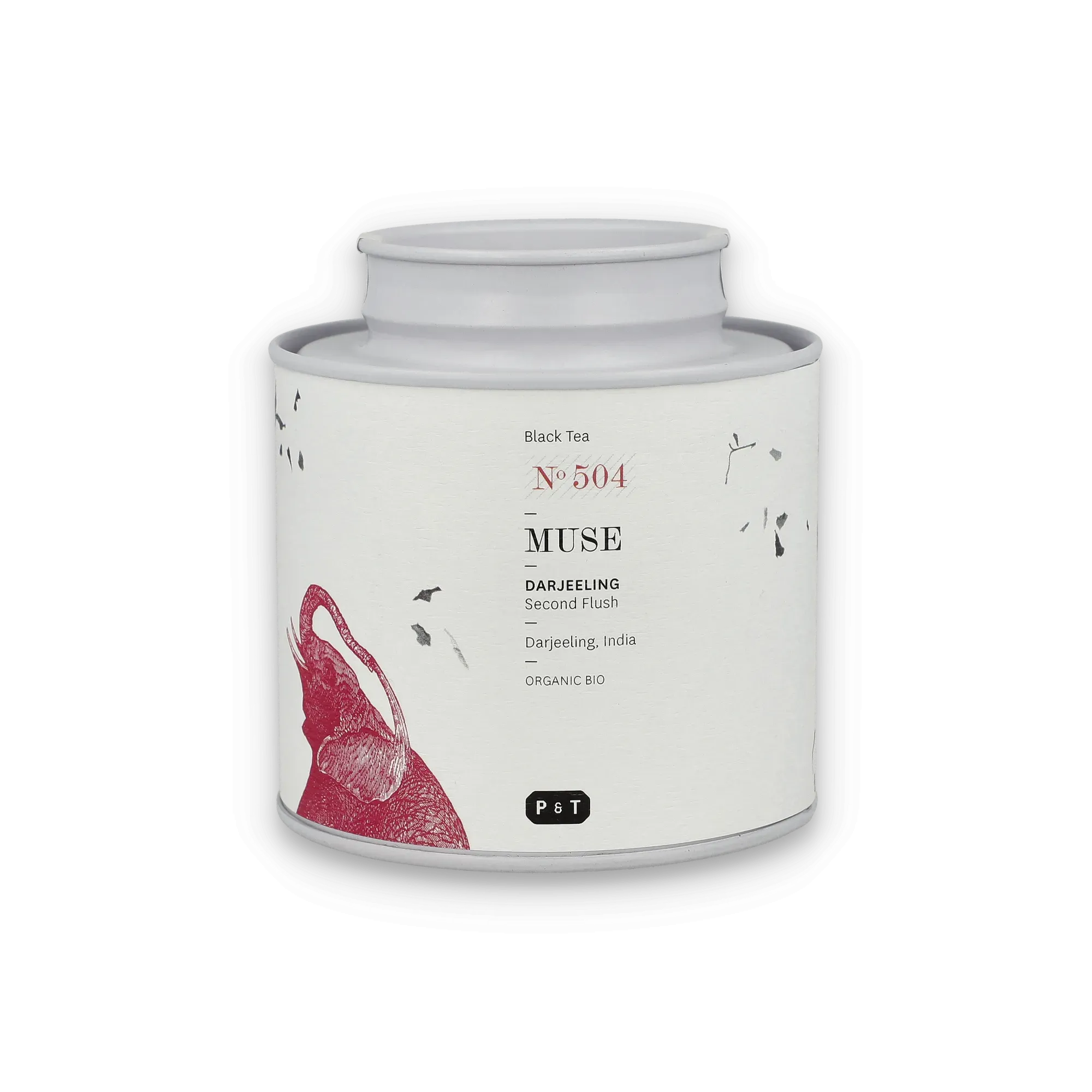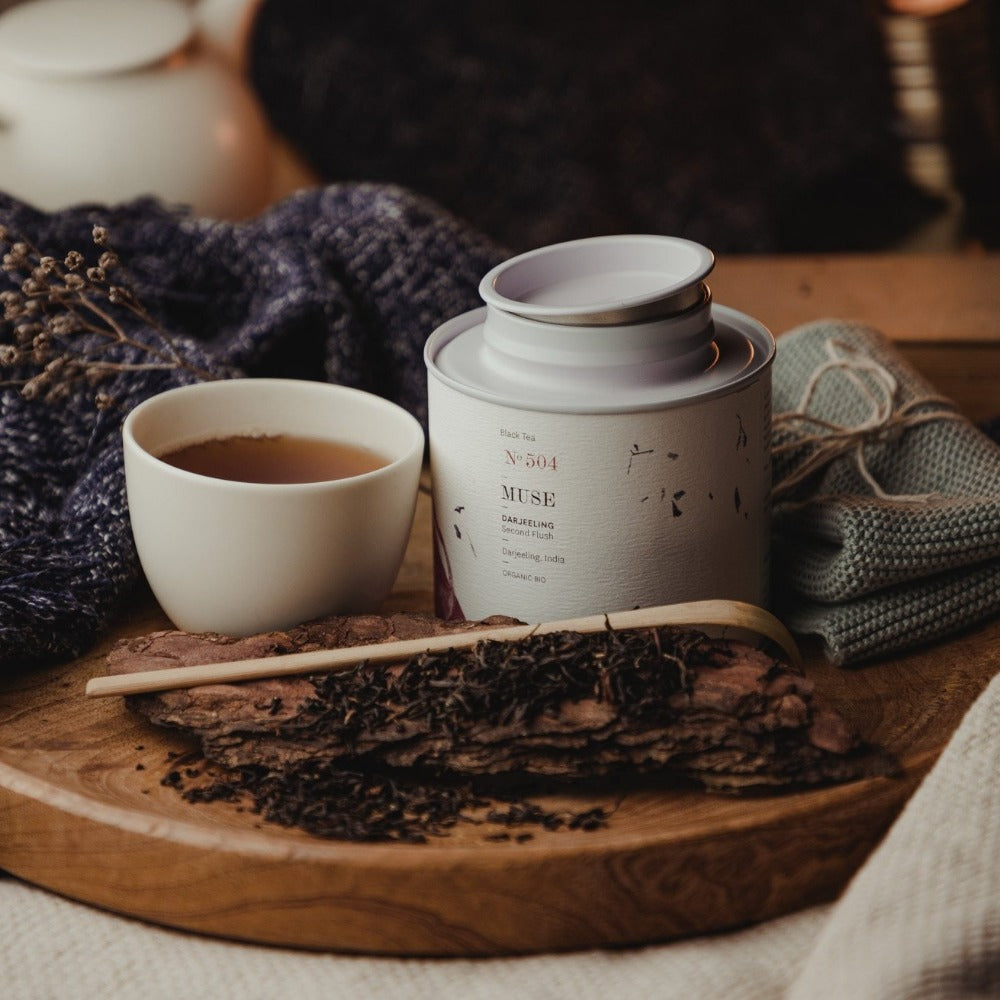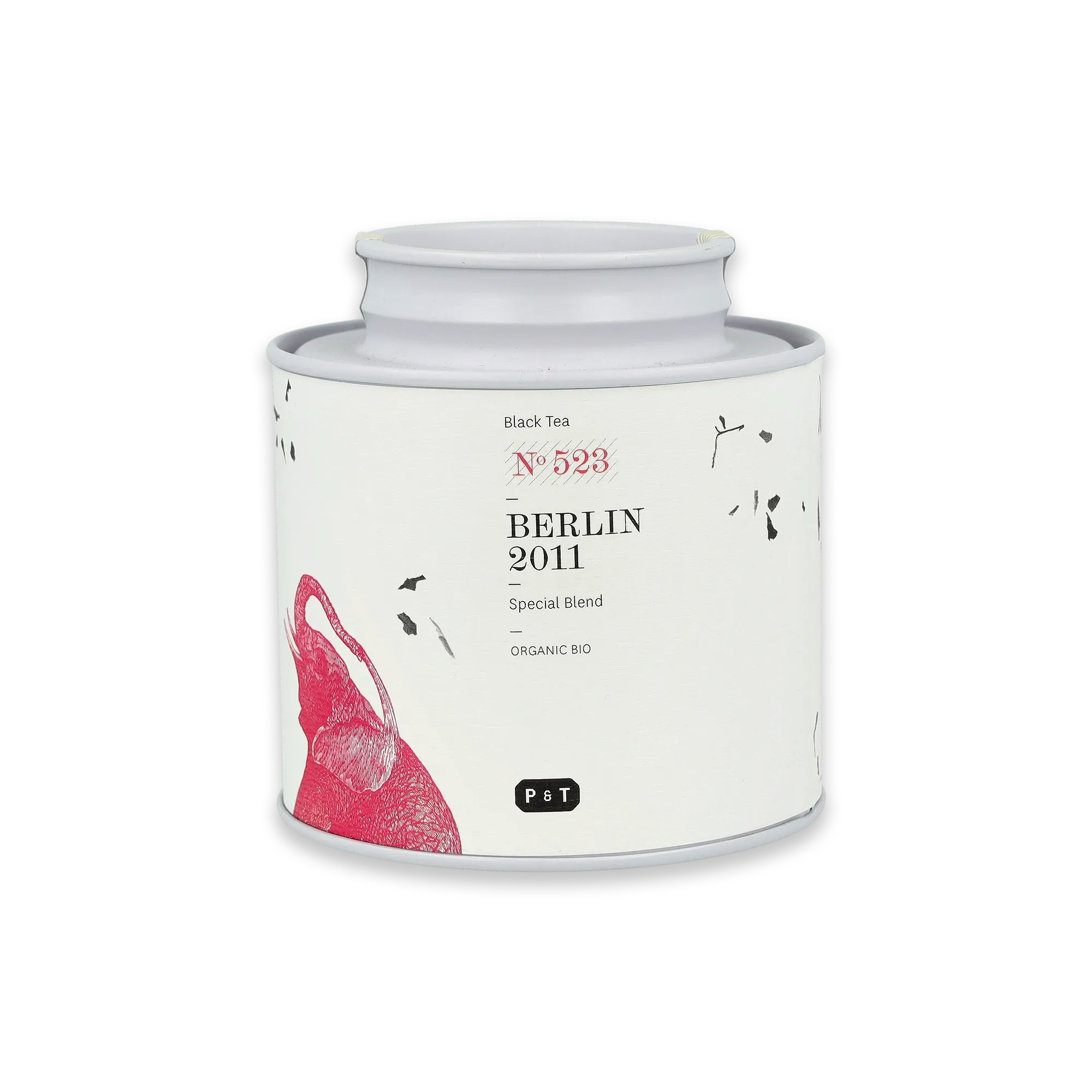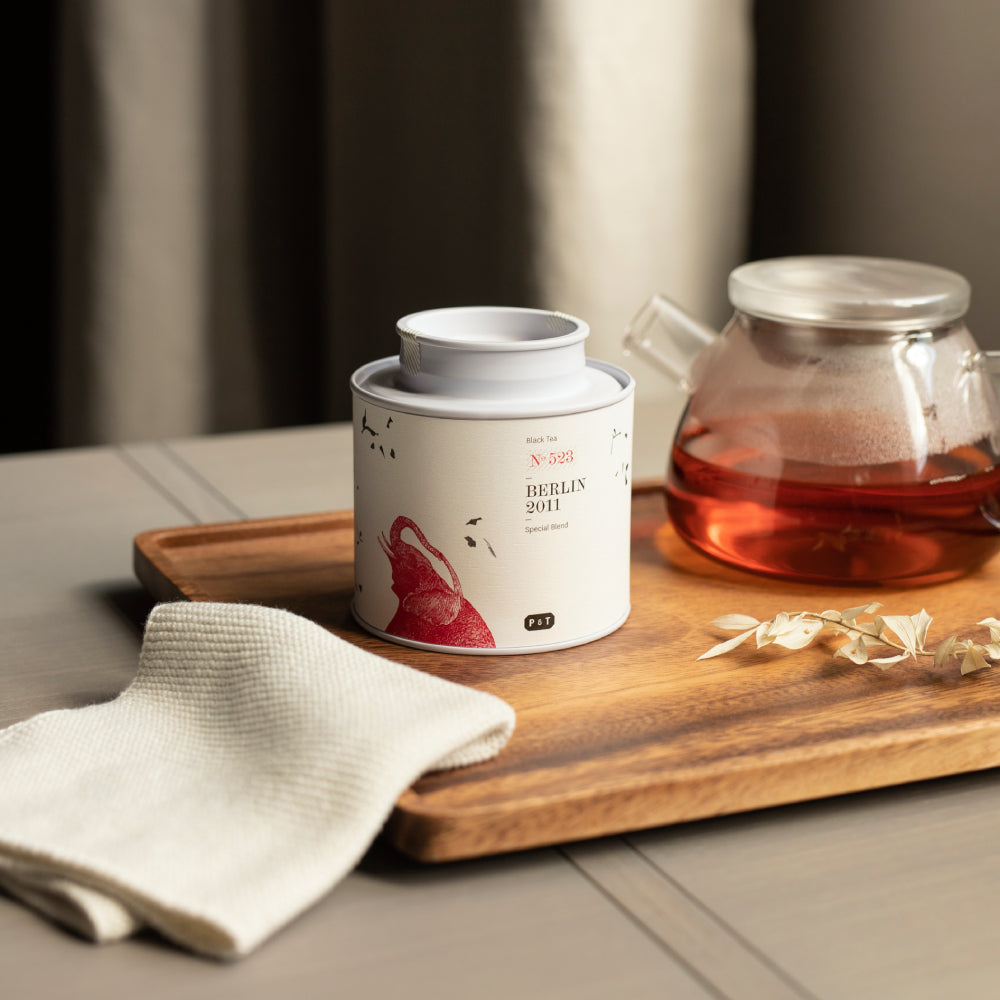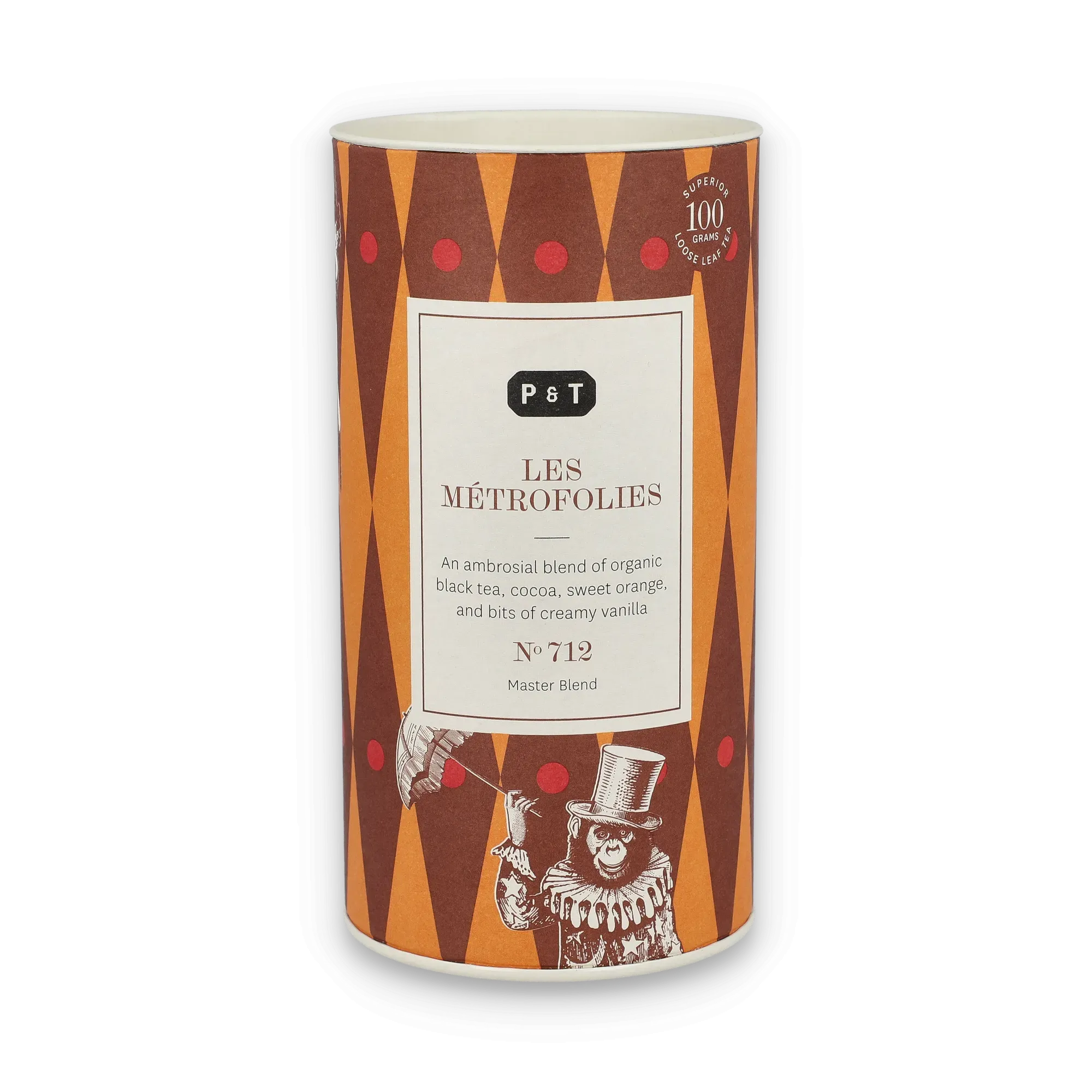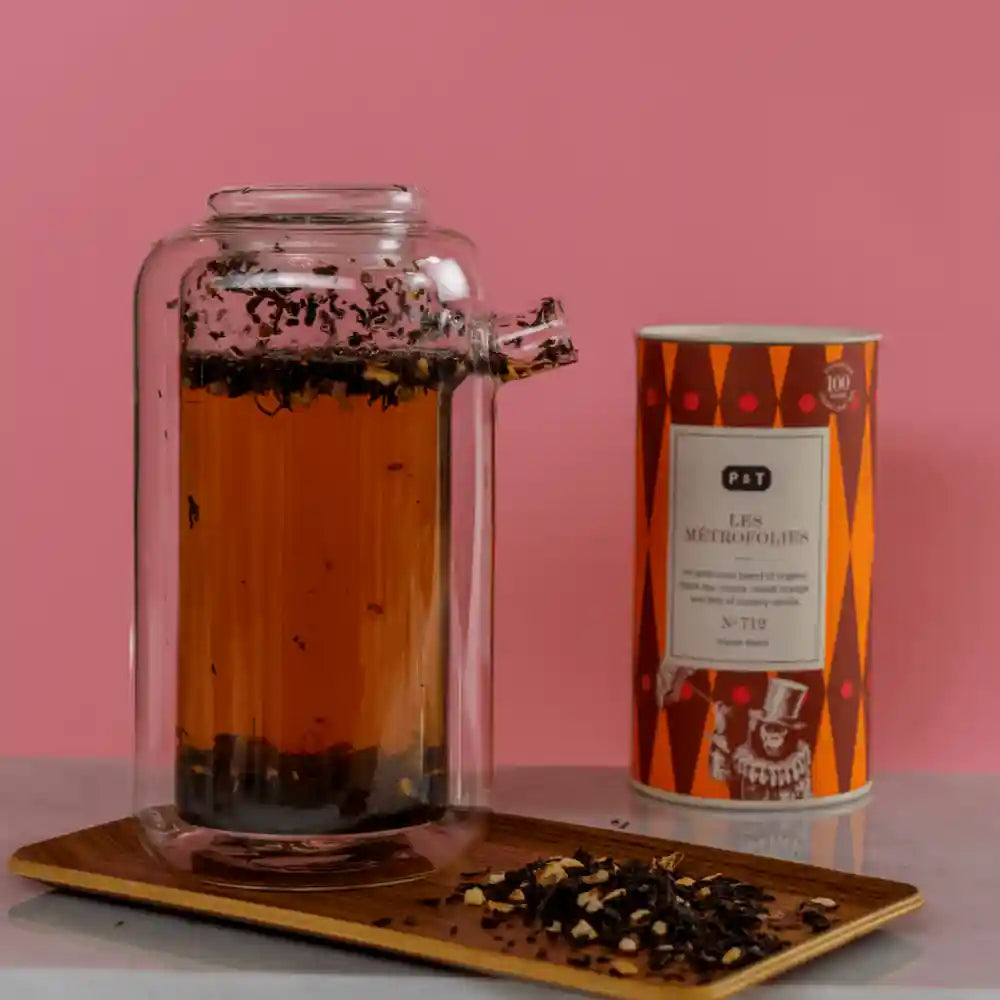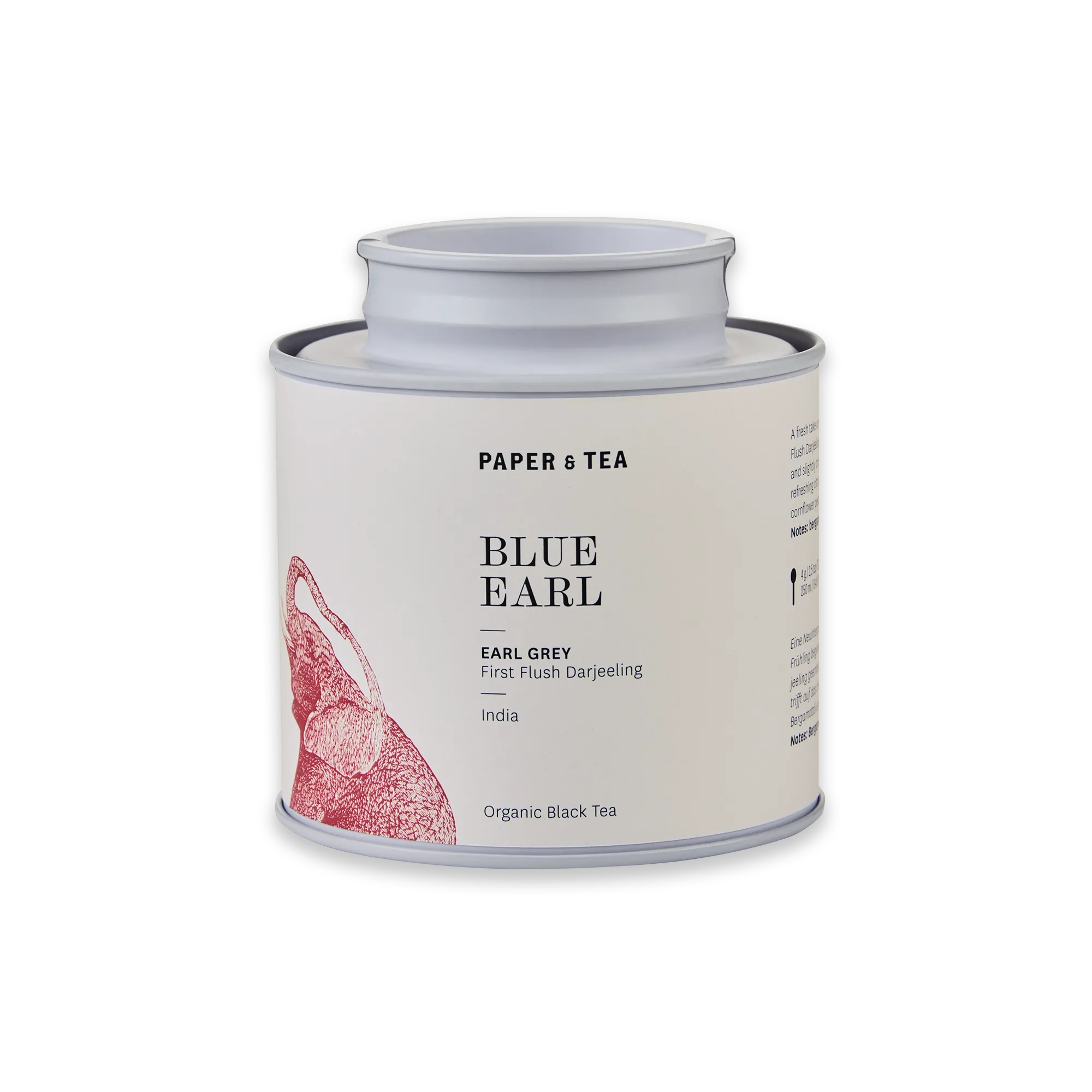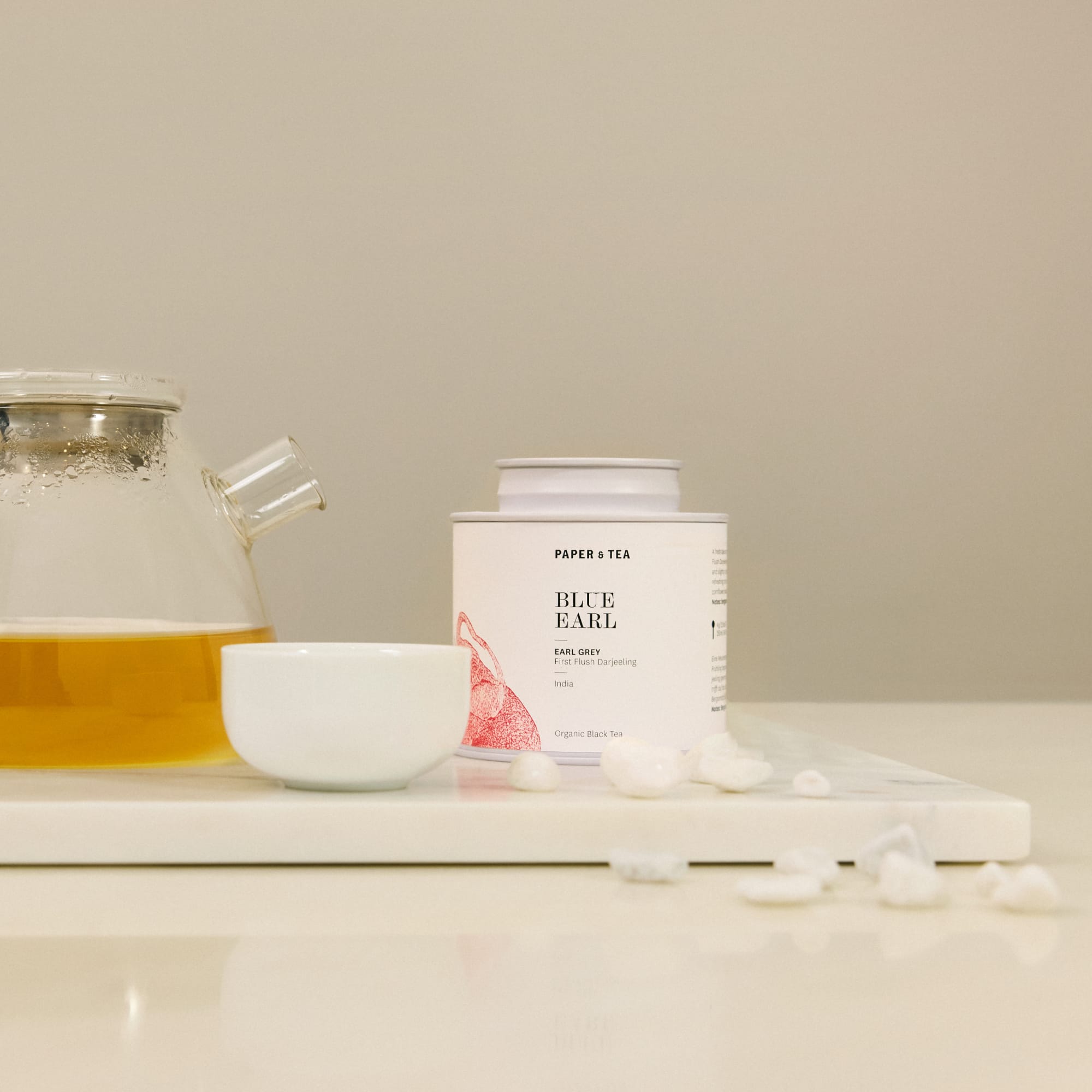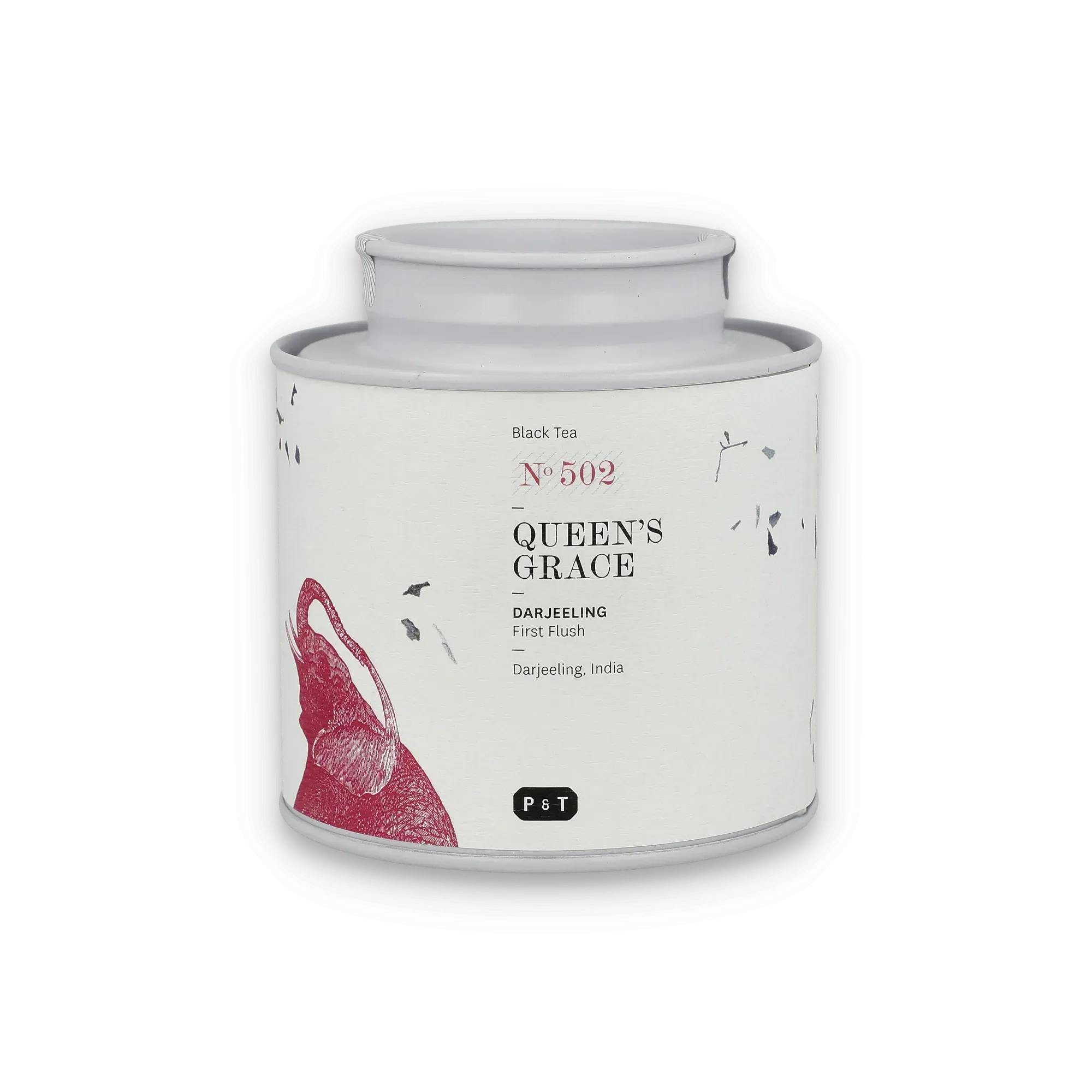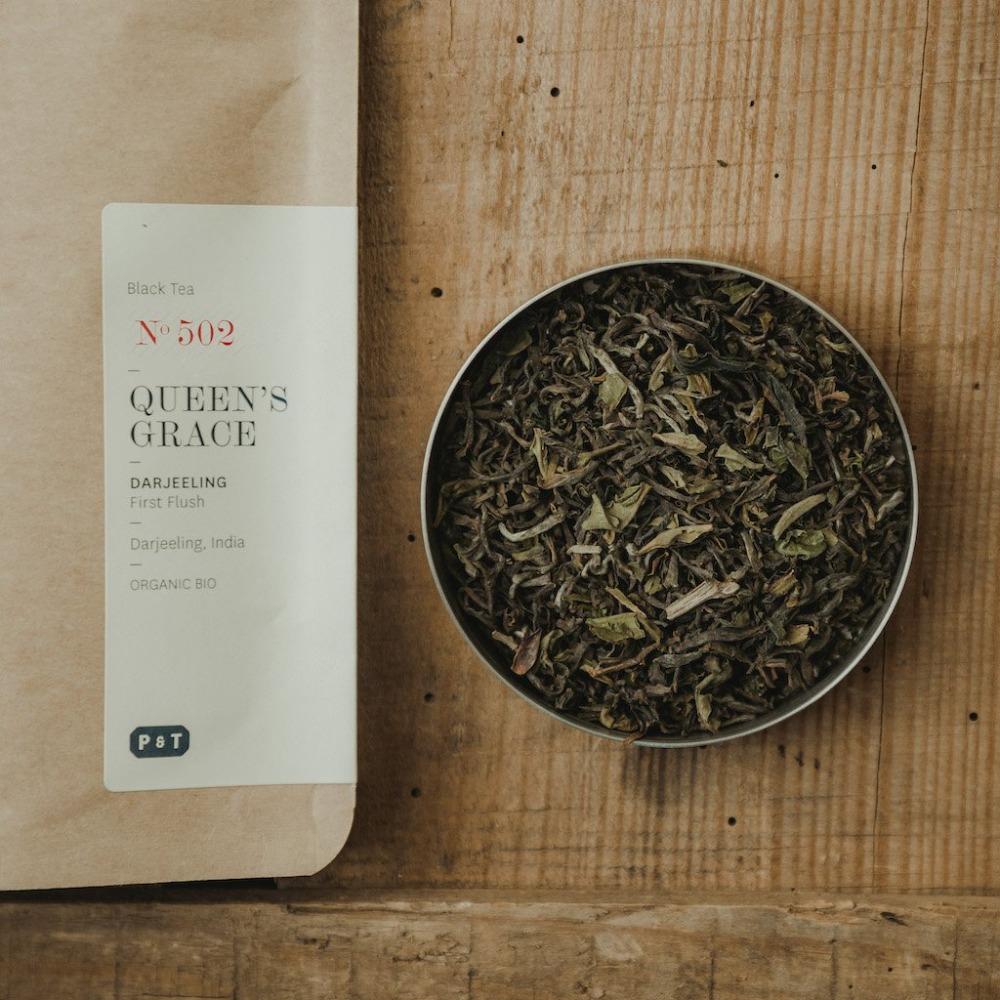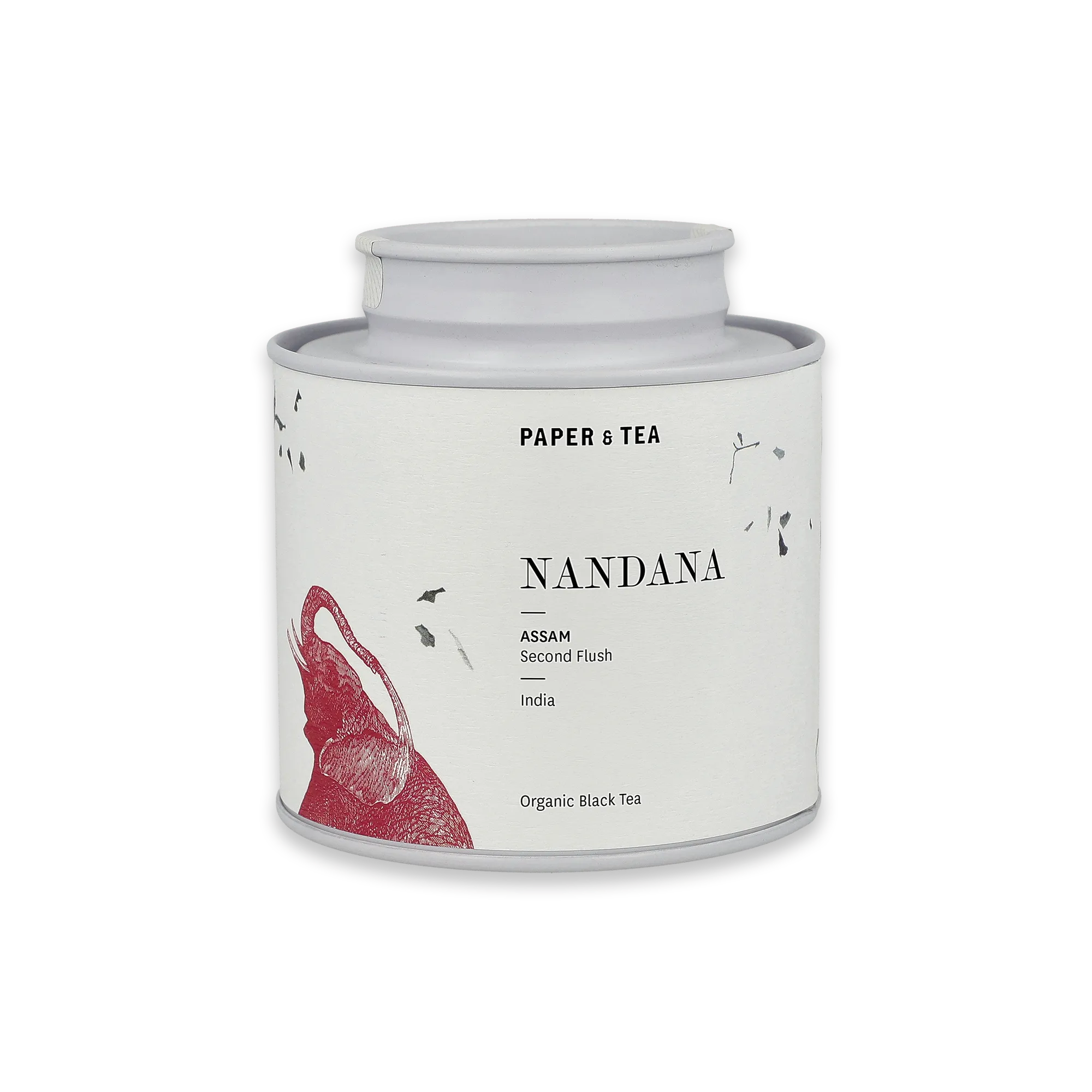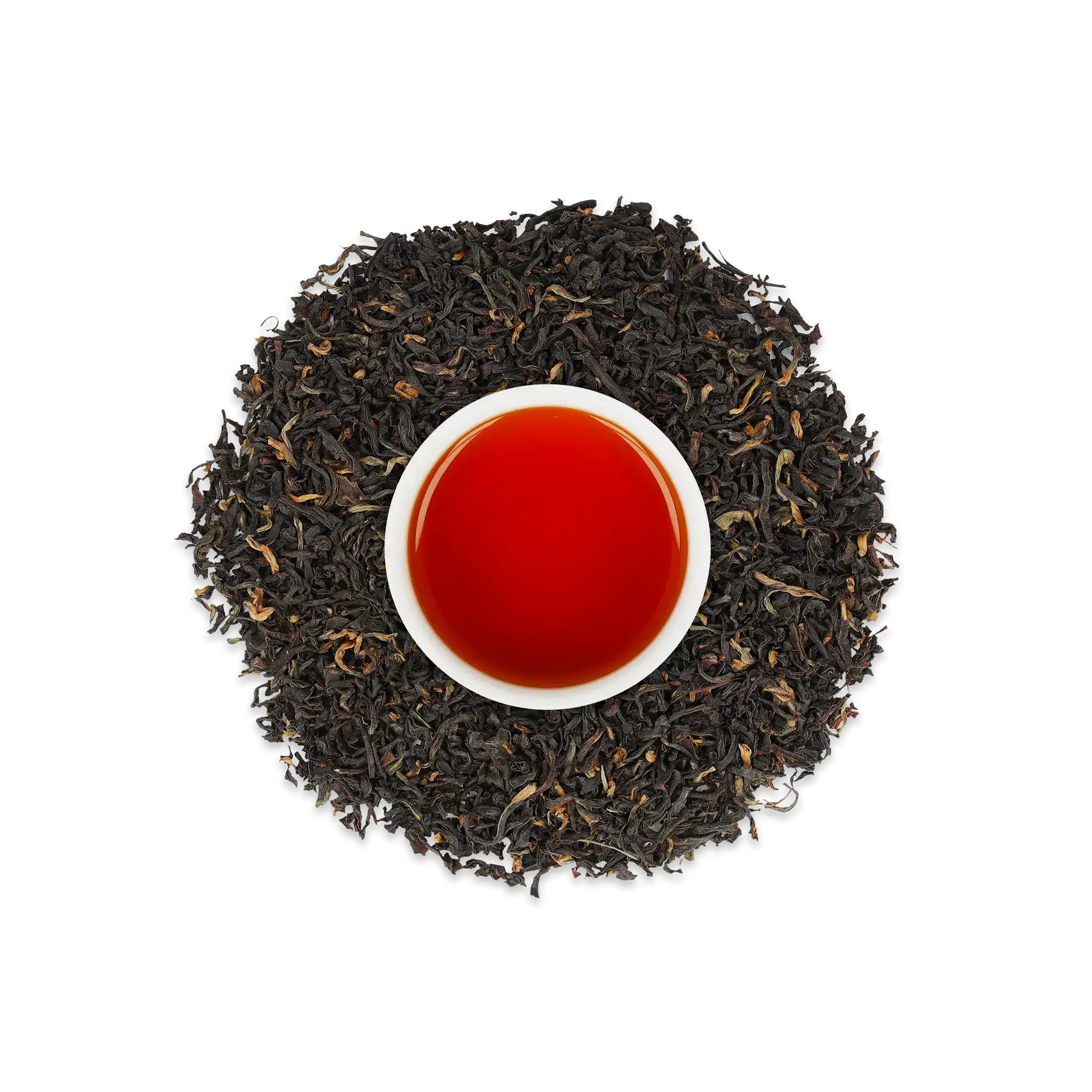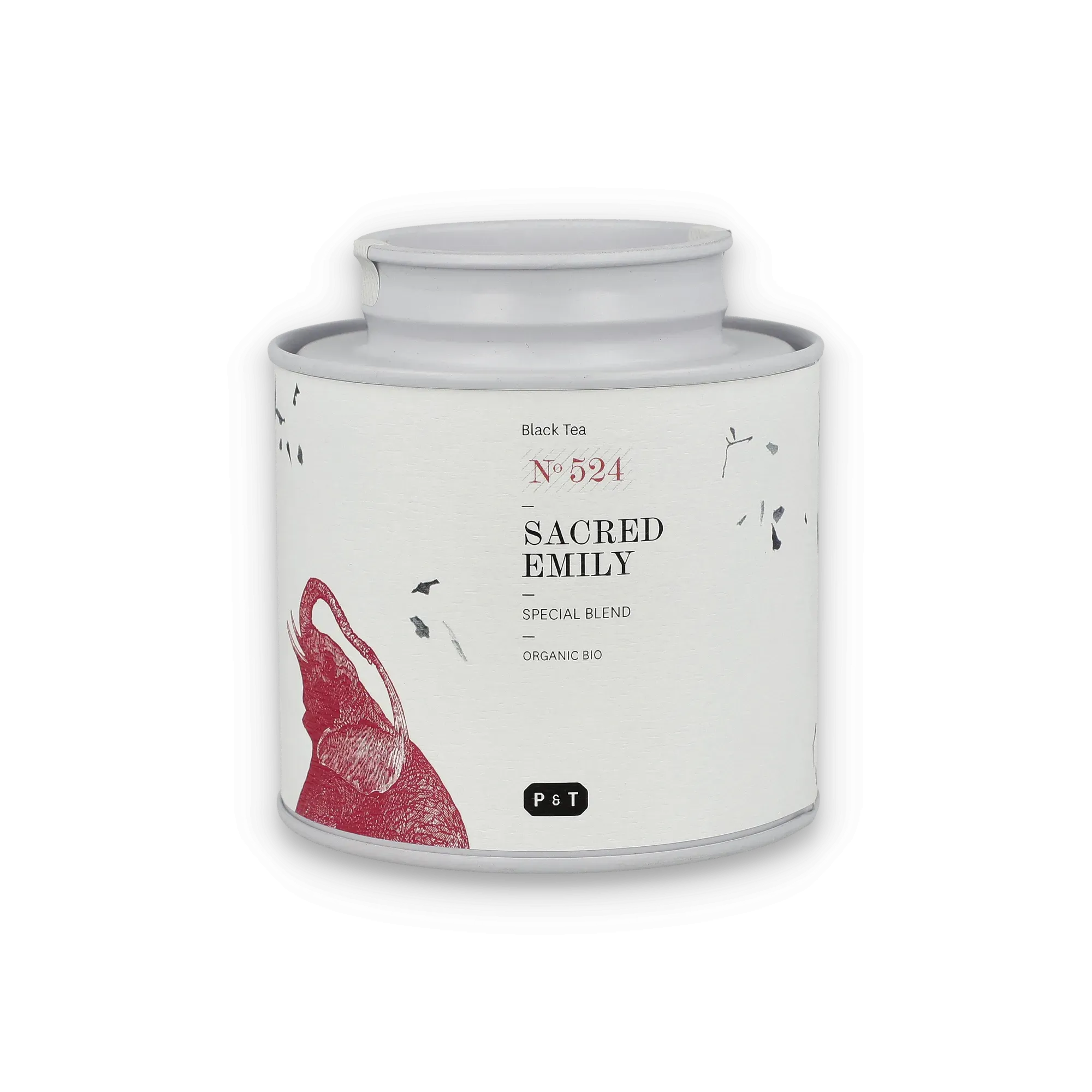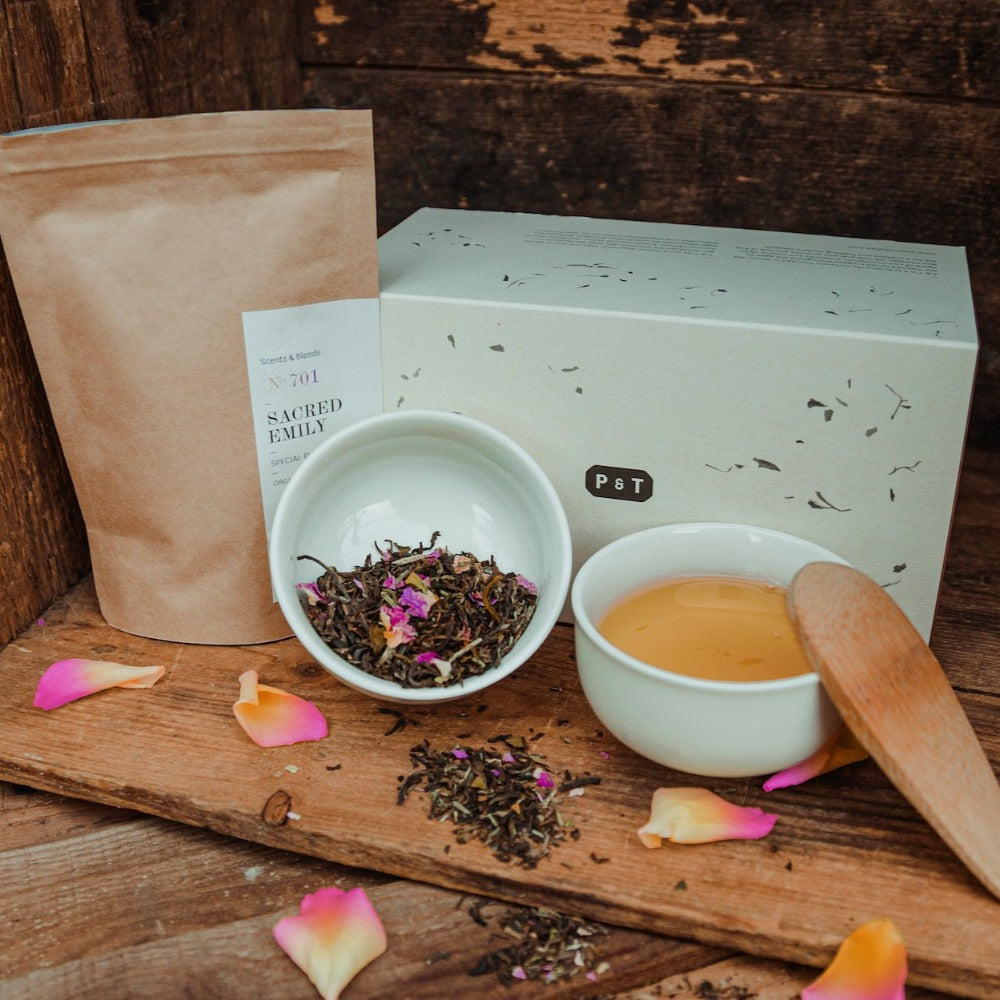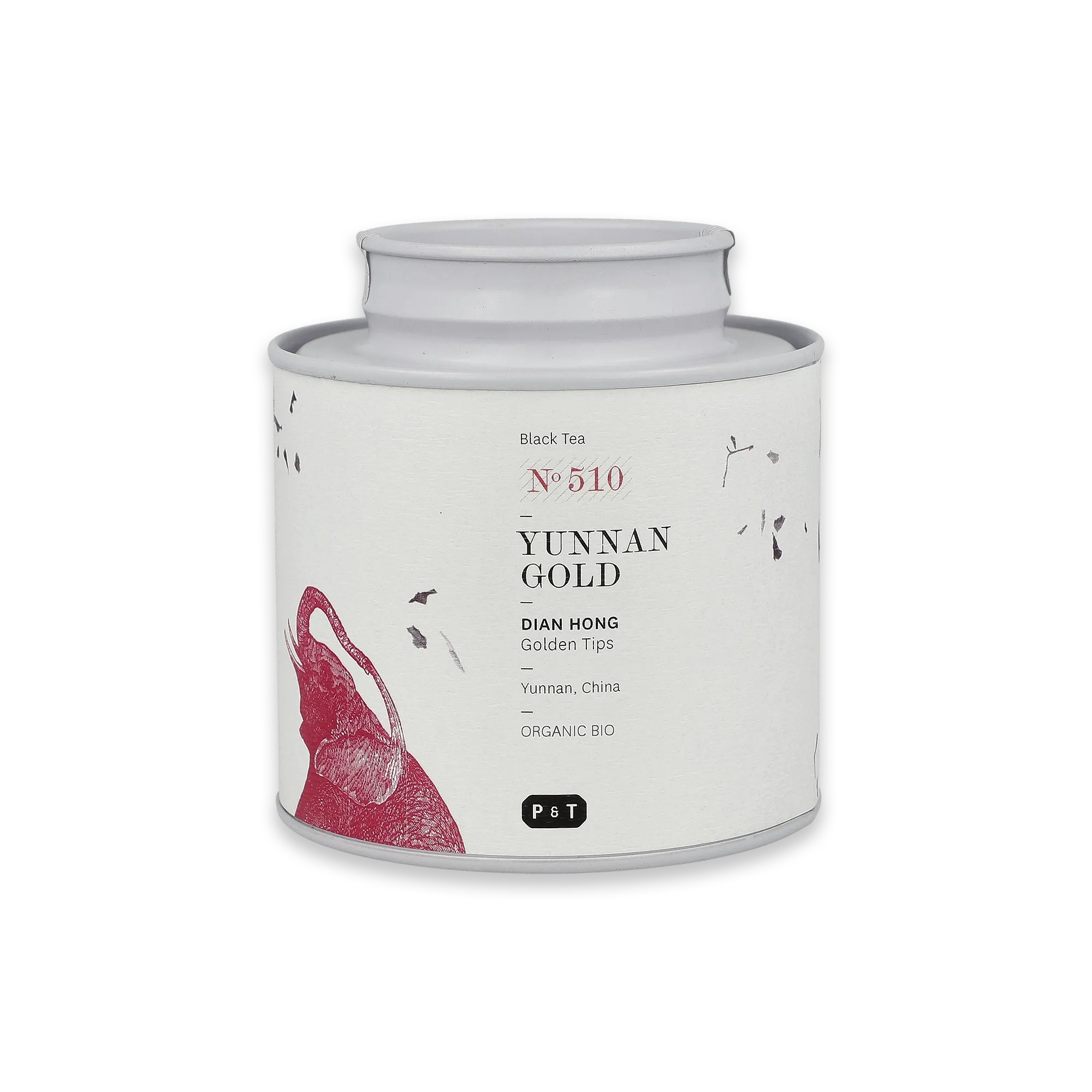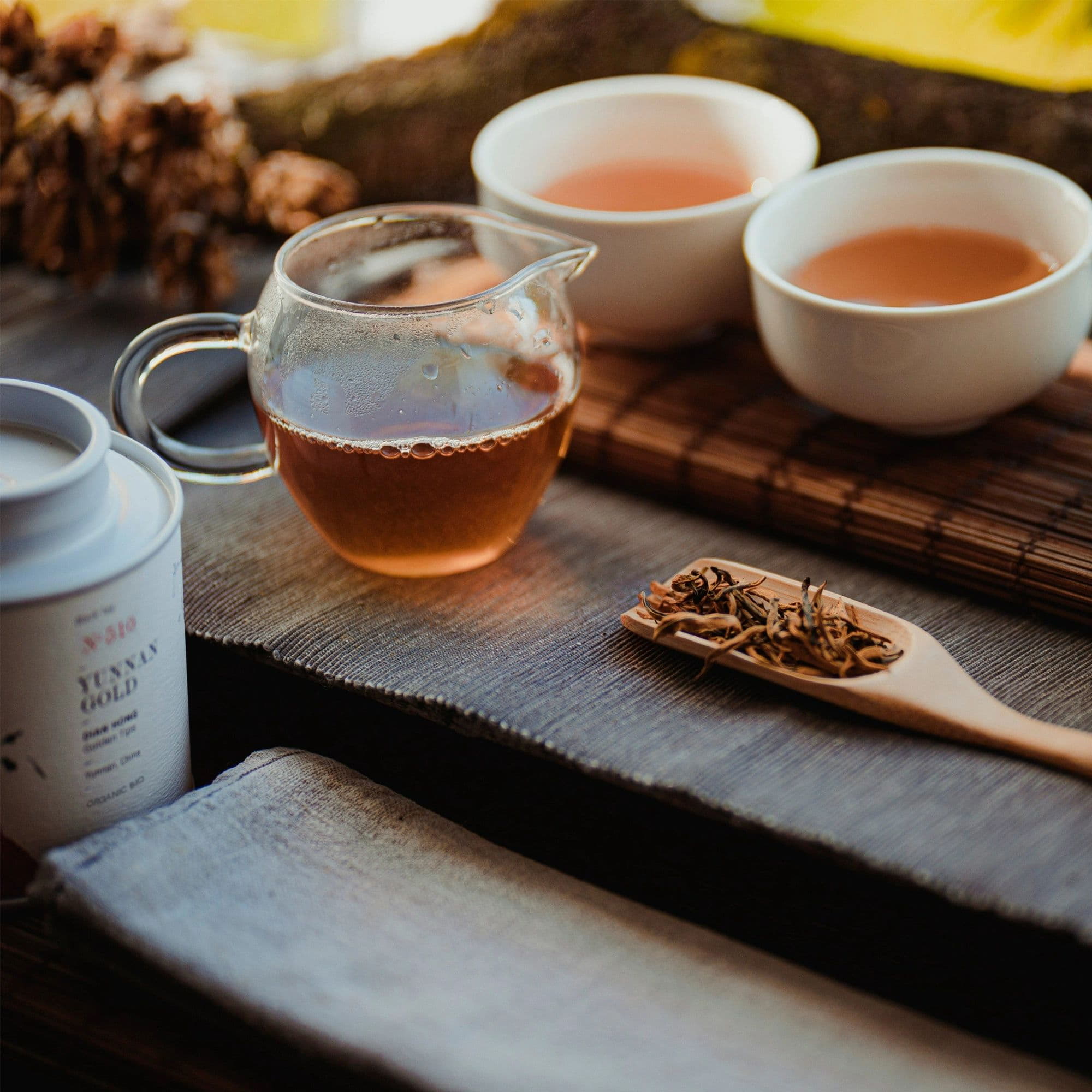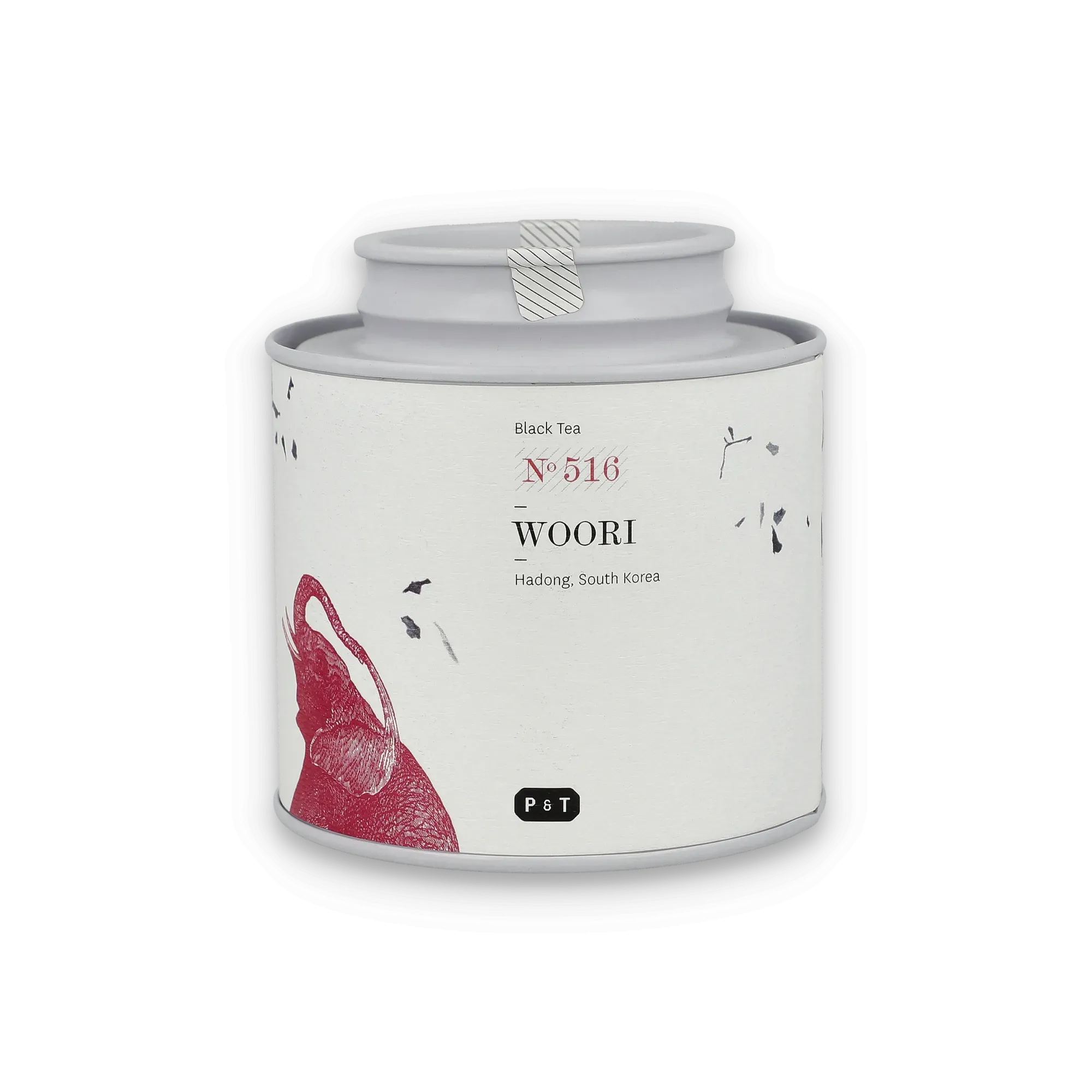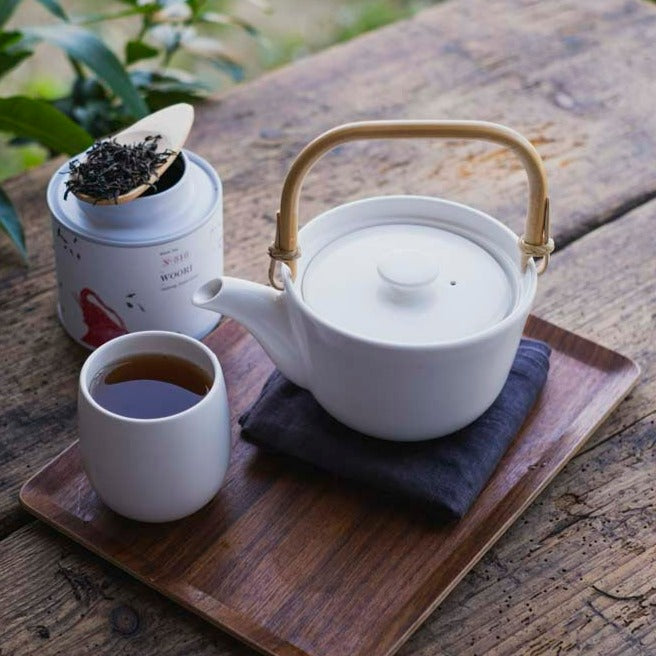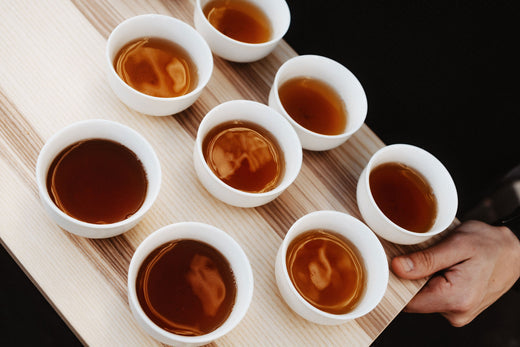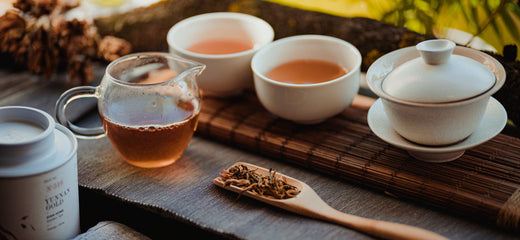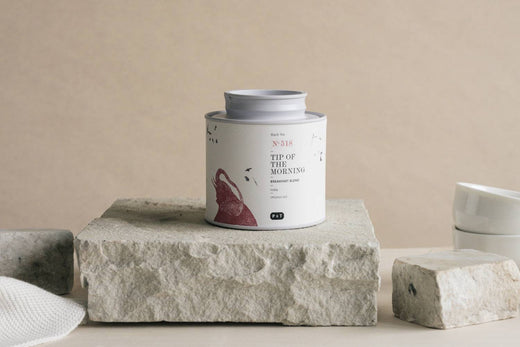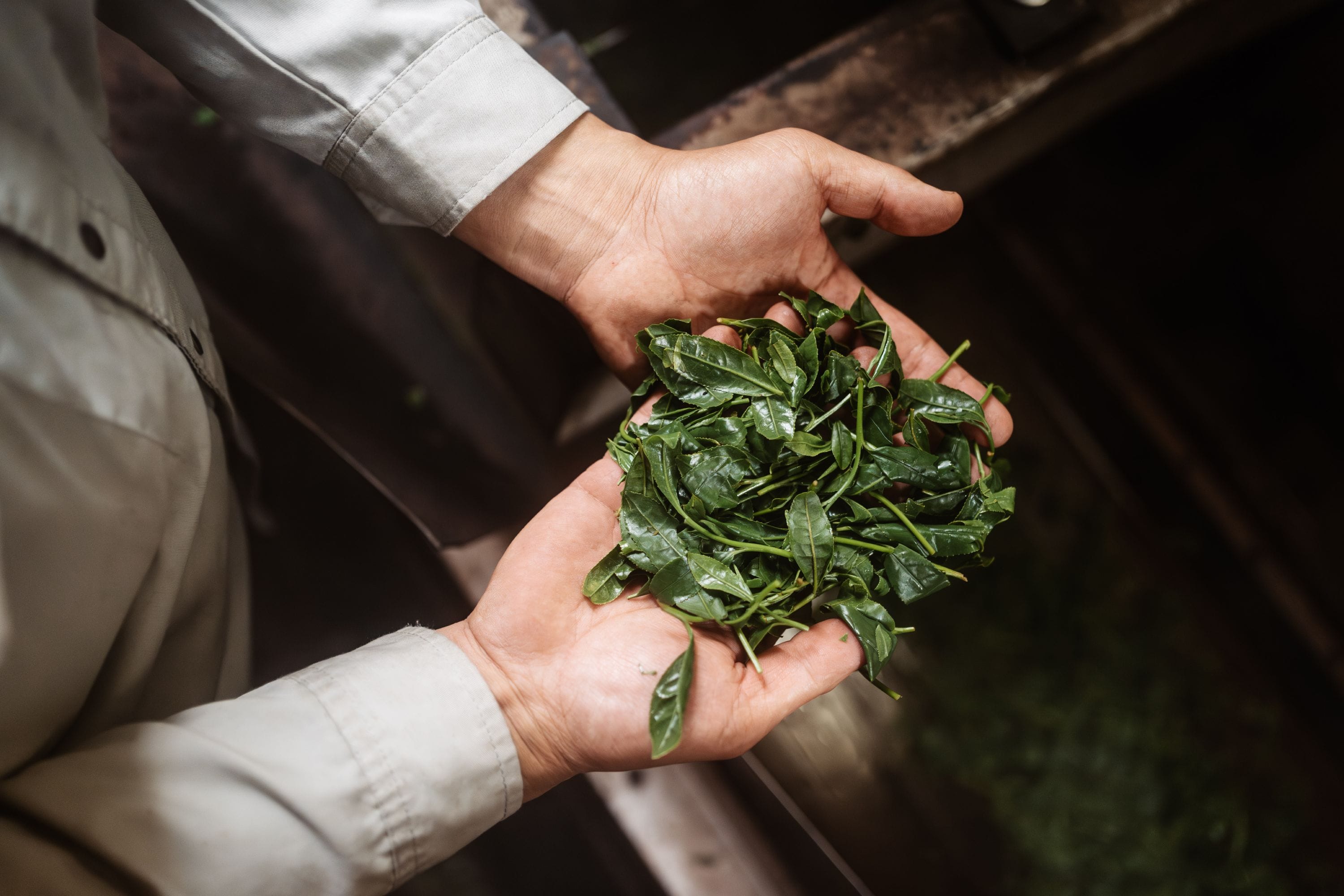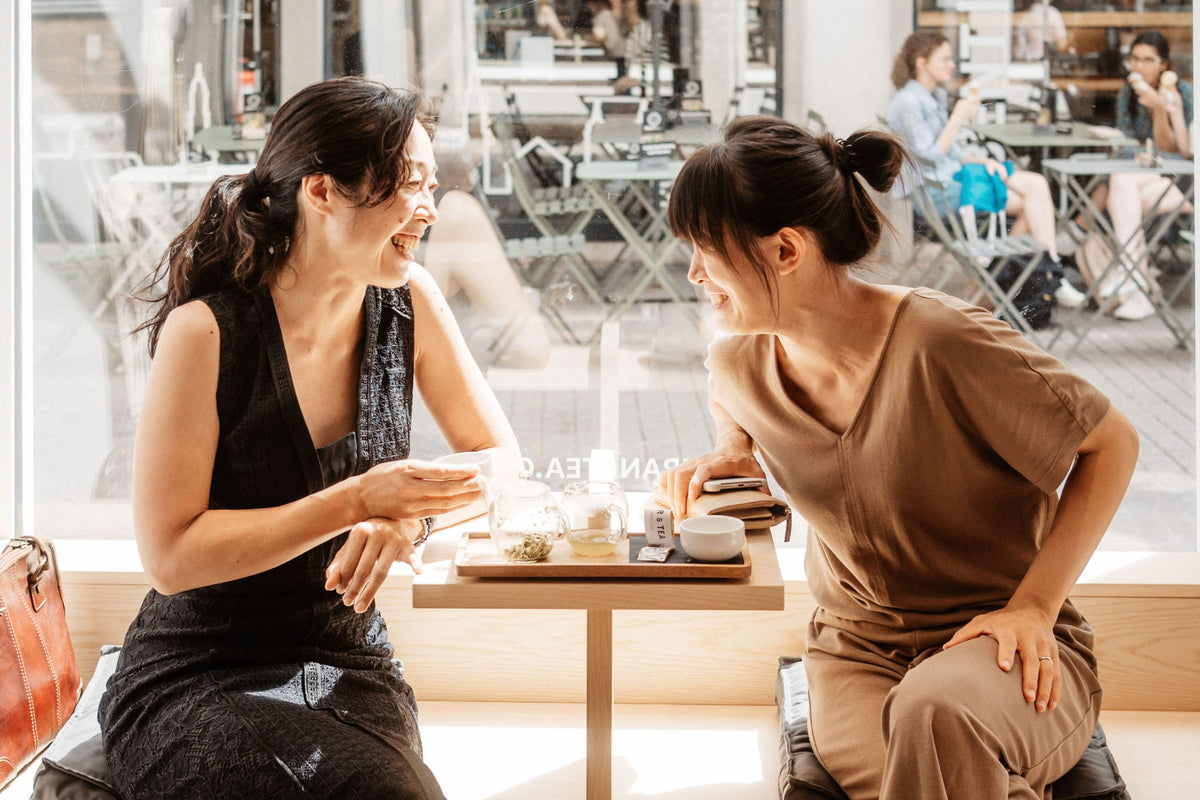Great joy
do you favour?
for your
tea moment
Black Tea: A True Taste Experience
Originally grown in China, black tea found its way to Europe in the 17th century and is now one of the most enjoyed tea types. And for good reason! There is an incredible variety of black teas with different aromas to discover, from floral Darjeeling to robust Assam tea to the highly prized Golden Tip tea from China. Here, you will learn why the origin of tea leaves plays such a crucial role in taste, how to properly prepare your teand which notable varieties you should try. Get ready for an aromatic journey through the fascinating world of black tea.
Black Tea: A True Taste Experience
Originally grown in China, black tea found its way to Europe in the 17th century and is now one of the most enjoyed tea types. And for good reason! There is an incredible variety of black teas with different aromas to discover, from floral Darjeeling to robust Assam tea to the highly prized Golden Tip tea from China. Here, you will learn why the origin of tea leaves plays such a crucial role in taste, how to properly prepare your teand which notable varieties you should try. Get ready for an aromatic journey through the fascinating world of black tea.
Journey to the Past: History of Black Tea
The history of black tea dates back thousands of years. Tea was already being grown in the Chinese province of Yunnan. The region in southern China is considered the birthplace of our favorite drink and is thus called the "birthplace of tea." During the Ming Dynasty (1368-1644), Chinese tea farmers discovered that the tea leaves changed through full oxidation. Fully oxidized leaves darken and produce a reddish cup, which is why black tea is known as "red tea" in China.
The spread to Europe was due to theft: In the 1840s, the British sent the explorer Robert Fortune on behalf of the British East India Company to China to steal tea plants and the closely guarded tea processing knowledge and bring them to the then British colony of India, where the second-largest black tea production in the world was created. From there, black tea conquered the world. You can now find black tea cultivation areas in India, Sri Lanka, China, Kenya, as well as South Korea and Nepal. The different origins are reflected in your cup: Environmental conditions such as climate, soil composition and altitude have a significant impact on flavor nuances.
Benefits of Black Tea
Black tea is more than just a beverage; it’s an aromatic experience. The vast variety of types makes it a popular choice, especially for your morning cup. Besides the irresistible flavor notes, tea lovers also appreciate the effects of black tea. The tea leaves of the Camellia Sinensis plant, from which black tea is derived, naturally contain caffeine. Thus, enjoying black tea can improve your attention and concentration.
Varieties of Black Tea
The origin of the tea leaves plays a crucial role in the taste of your cup of black tea. You can discover an exciting spectrum of delicate, robust, and malty notes. We introduce you to some of the most popular black tea varieties. Maybe you’ll find your new favorite tea!
Darjeeling
Darjeeling is a famous cultivation area in northern India, in tea gardens are located high on the slopes of the Himalayas. The tea harvested there is considered the lightest black tea and its floral notes and delicate taste make it a highly prized drink known among connoisseurs as the "champagne of teas." In fact, Darjeeling is a protected term and only teas from this region can be called such. The most sought-after are the first harvest of the year in spring, the "First Flush," which produces a particularly light cup and the second harvest, the "Second Flush," which matures longer on the plant and develops a warm, nutty flavor. While primarily black tea has been produced in the former British colony for a long time, there are now also other types such as green tea from Darjeeling.
Assam
Also named after its origin, Assam tea is a popular choice. The production in Assam accounts for about half of India’s total tea production. Assam tea is what we envision as a typical breakfast tea, optionally with a splash of milk. It tastes malty and robust. If you love strong black tea, you’ll love Assam.
Lapsang Souchong
Admittedly, the first sip of this Chinese smoked tea might take some getting used to. The first black tea, however, was likely a Lapsang Souchong! The origins of black tea date back to the Ming Dynasty when Chinese tea farmers in the Fujian region didn’t have enough time during the harvest season to process all the leaves in time. The tea leaves oxidized, reacting with the surrounding air and darkened. To save the harvest, the leaves were roasted over pine wood and Lapsang Souchong was born. The intense smoky aroma is an unforgettable taste experience for connoisseurs.
Ceylon
Ceylon is the old name for Sri Lanka under British rule. Former coffee plantations were transformed into tea cultivation areas. Heavy rainfall and a subtropical climate give the black tea a robust note. Sri Lanka focuses on export, producing more tea than is consumed domestically. Ceylon tea is medium-strong and reminiscent of black teas from China. You can recognize it by the typical red tinge in the cup.
Earl Grey
Earl Grey is probably the most famous black tea blend. Traditionally, black tea is flavored with Italian bergamot. The refreshing citrusy note makes the harmonious symphony of Earl Grey an irresistible taste experience.
Keemun
Keemun is a true gem among black teas. According to legend, the origin of this tea goes back to a Chinese official who traveled to Fujian in the 19th century to learn the art of black tea production. Shortly after, he opened the first tea factory in Qimen, also known as Keemun, located in Anhui province. The British liked Keemun tea so much that it became a staple ingredient in their English Breakfast tea blend. For tea lovers who prefer mild black tea, Keemun from China scores with a delicate aroma.
Yunnan
In the Yunnan province, the "cradle of tea," black tea varieties are also produced alongside Pu-erh teas. Dian Hong black tea is characterized by its golden leaf buds ("Golden Tips"). It is appreciated for its honey-sweet taste, underscored with notes of dark chocolate and caramel.
Higher Quality Through Organic Certification?
When choosing the right black tea, it’s advisable to look for certifications that provide information about ecological cultivation and fair trade products. Organic quality teas are sustainably grown and carefully processed. Most of our loose teas are hand-picked. And you can taste that in the cup. The GEPA fair+ mark ensures that the workers in the tea gardens are fairly compensated and work under humane conditions.
Preparation Tips for the Perfect Cup
Only with the correct preparation can you extract the full flavor from the tea leaves and enjoy your black tea to the fullest. When brewing, steeping time, water temperature, and the correct amount play an important role. Only then can the tea leaves release their diverse aromas into the cup. We will show you how to prepare black tea properly.
Measure with Your Teaspoon
Die Menge an Teeblättern beeinflusst die Stärke deiner Tasse. Eine universelle Teemenge gibt es nicht, da sie in den unterschiedlichsten Formen daherkommen. Gerollter Oolong hat ein größeres Volumen als zerkleinerter Schwarztee. Durch den Verarbeitungsprozess ist die Blattgröße von Schwarztee kleiner als andere Tees. Wir empfehlen dir 1-2 Teelöffel Schwarztee pro Tasse. Aber Herumexperimentieren ist ausdrücklich erwünscht, damit du deinen perfekten Geschmack findest!
Water Quality and Boiling Water Temperature
Tea is 98% water. Therefore, the type of water you use significantly affects the taste of your cup. We generally recommend filtered water. Delicate teas like Darjeeling unfold their floral notes in soft water. If the water contains traces of lime, it is referred to as hard water. For hot beverages, a hardness level of 8 is optimal. The process of steeping time and water temperature is called extraction. The ideal temperature for brewing black tea is 90°C. The more oxidized the tea is, the longer the extraction takes. For fully oxidized black teas, a steeping time of 3 minutes is the rule.
Would You Like Something With It?
Black tea is consumed worldwide, but each country has its own traditions and customs. In Great Britain, milk is typically added to black tea. For fruity notes, there is a variant with a splash of lemon. For those who prefer it sweeter, a spoonful of honey rounds off the delicious cup. Tea connoisseurs swear by drinking their tea pure for a complete flavor. How you prefer to enjoy your cup of black tea is entirely up to you.
Your Questions & Our Answers
Everything About Black Tea
We recommend consuming black tea within three years after purchase when stored as loose tea. For the best results, store it in airtight tea caddies and aroma bags, protected from heat and light.
At PAPER & TEA, you will find premium tea in reusable cotton bags. For black tea, glass or porcelain teapots are the most popular. The glass teapot is an all-rounder and suitable for all types of tea. This makes preparing your favorite tea a breeze.
Black tea is the variety most enjoyed with a splash of milk and sugar. This makes stronger blends taste milder. True connoisseurs prefer to drink their tea pure. However, when it comes to enjoyment, there is no right or wrong. Experiment with different preparations and find your perfect cup of tea.
The first black tea was likely produced during the Chinese Ming Dynasty (1368-1644). Tea farmers, running out of time, allowed tea leaves to fully oxidize in the air, turning them dark. Thus, black tea was born. It wasn't until the 17th century that the British discovered tea and began cultivating it in large quantities in their then-colonies, India and Sri Lanka. From there, black tea rapidly spread across Europe and is now one of the world’s most popular tea varieties.
The world champions of drinking tea do not hail from England, but from Germany: The East Frisians drank 300 liters of tea per person in 2022, making them the undisputed number one. Ireland came in second place with 198 liters per person, followed by the United Kingdom in third place with 167 liters per person.
PAPER & TEA Magazine
Black Tea & more
